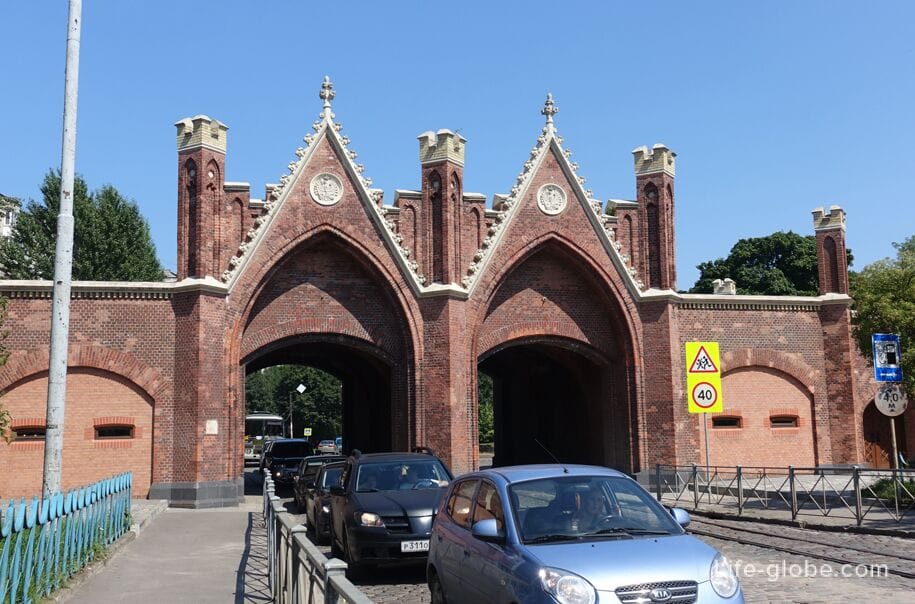
Friedland Gate (German name Friedländer Tor) is one of the seven preserved city gates of Kaliningrad.
Previously, the Friedland Gate was part of the defensive structures of Konigsberg, which were part of the Second Defensive Belt.
The gates that we can see today were built last. The exact date of construction of the gate is unknown, approximately 1862. Learn more about the Friedland Gate (brief history and architecture)...

Currently, the museum complex "Friedland Gate" is located within the walls of the Friedland Gate.
Admittedly, the Friedland Gate Museum, along with the Cathedral Museum, the Museum of the World Ocean and the Altes Haus apartment Museum, has become for us one of the most informative and interesting museums in Kaliningrad.
In the Friedland Gate Museum, in addition to the familiar concept of "Museum" - the study of expositions, there is an opportunity to take a virtual walk through the recreated streets of Konigsberg, touch and "try out" some exhibits, take vivid photos with personal participation, learn the history of Konigsberg - Kaliningrad, as well as see a film created with the help of old photographs of Konigsberg and try on stylized medieval costumes.
The museum complex "Friedland Gate" includes: 6 halls, two halls and an inner courtyard.
Entering the museum, we get to the ticket offices. Here, on the inner walls, you can find information: a brief history and architecture of the Friedland Gate, the scheme and expositions of the museum, the cost of tickets.
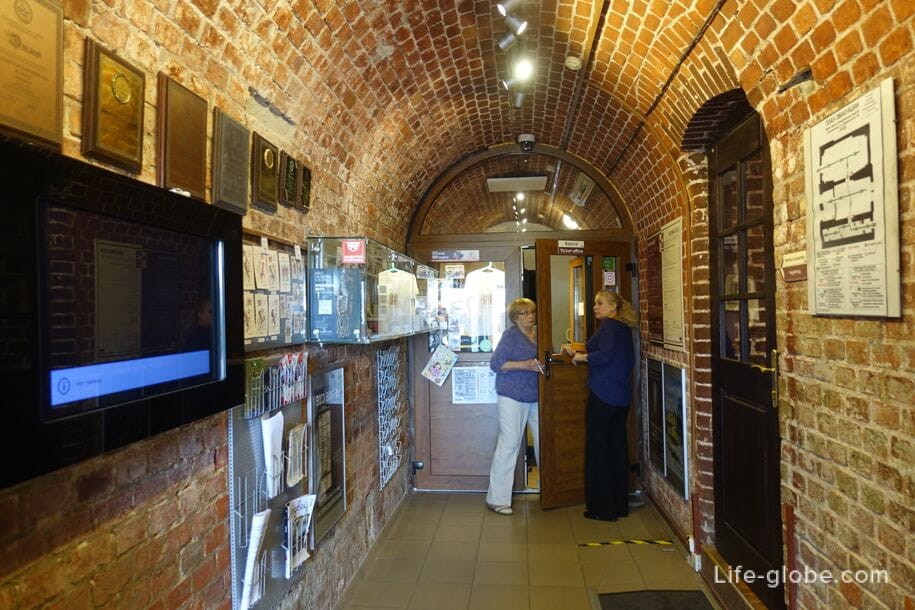
In the first hall of the museum there is a permanent exhibition "With faith in the heart".
The exhibition is dedicated to the first settlers who arrived from different parts of the USSR on the territory of the former East Prussia.
How did people who came to explore a new land in the post-war years see this land? What family heirlooms did you bring with you? These and other questions are answered by the exhibits of the exhibition: the works of the artist Romanas Borisovas and a collection of objects of religious worship: crosses, folds, icons made in the technique of copper art casting. In the presented paintings, the artist depicted "mute witnesses of the past" - castles, estates, churches, manors.
The post-war ruins are what the first settlers saw - fragments of a once beautiful and majestic city.
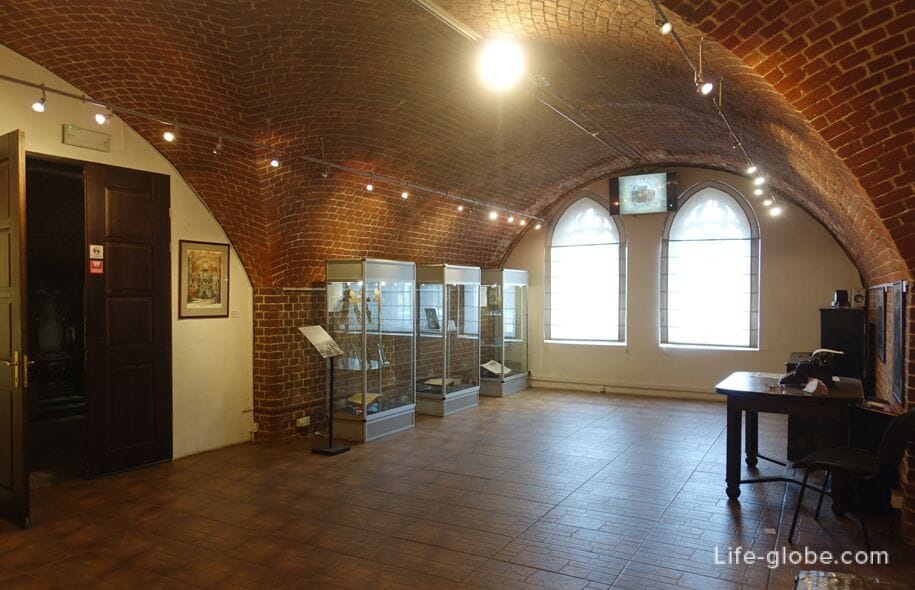
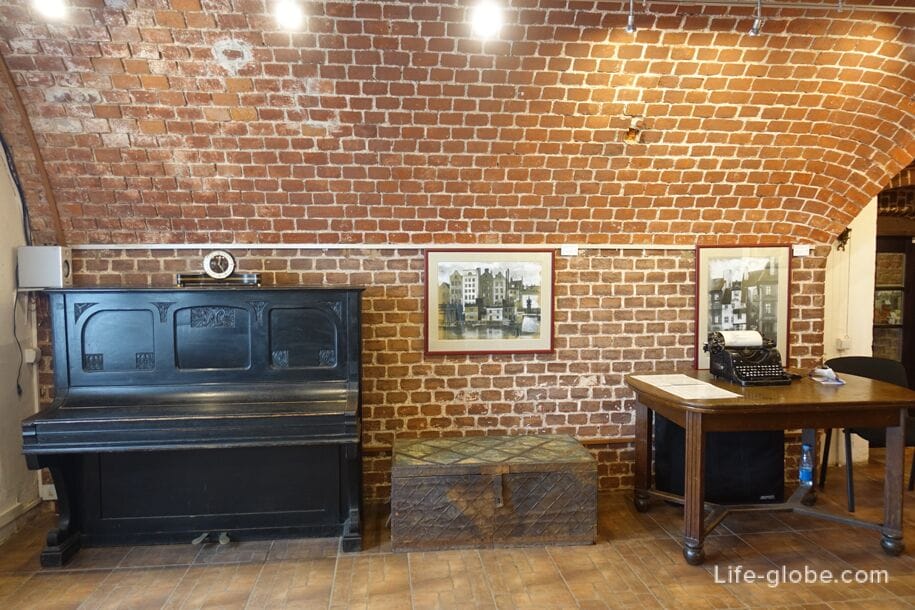


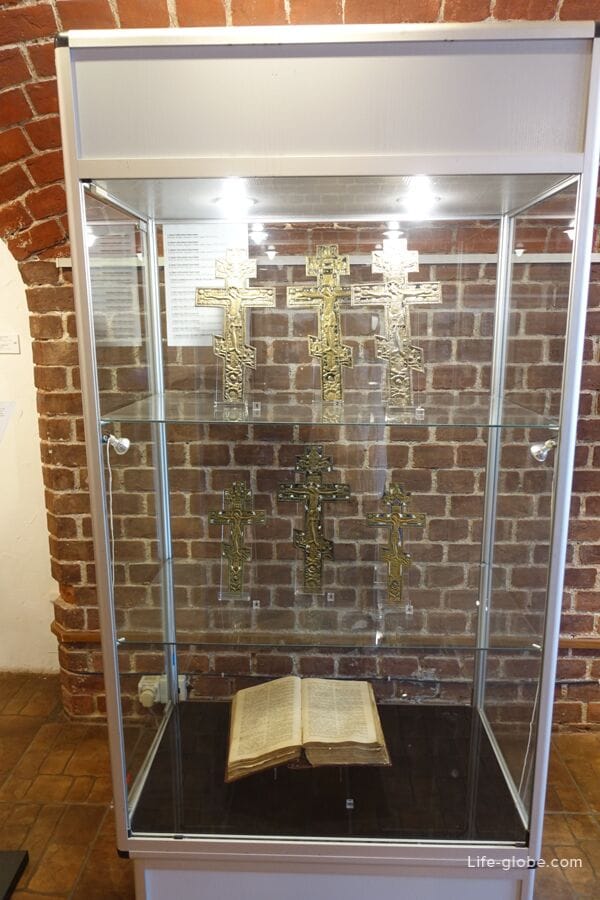
In the second hall of the museum there is also a permanent exhibition called "Virtual walks through the streets of Konigsberg".
In this hall you can see a 16-minute film created with the help of photographs of the "old" Konigsberg.
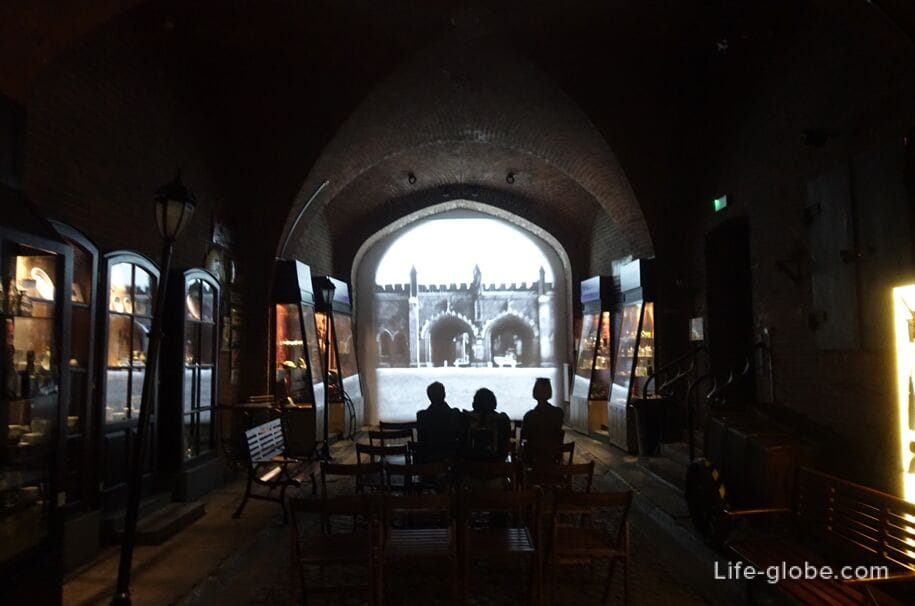
The exposition of the hall is dedicated to the history of the city of Konigsberg in the late 19th - first half of the 20th centuries.
With all confidence, this is an incredible walk through the streets of the old city by the power of emotional impact, during which the original cobblestone road is felt under your feet, and the windows of various establishments open before your eyes, looking into which you can immerse yourself in the atmosphere of the past.
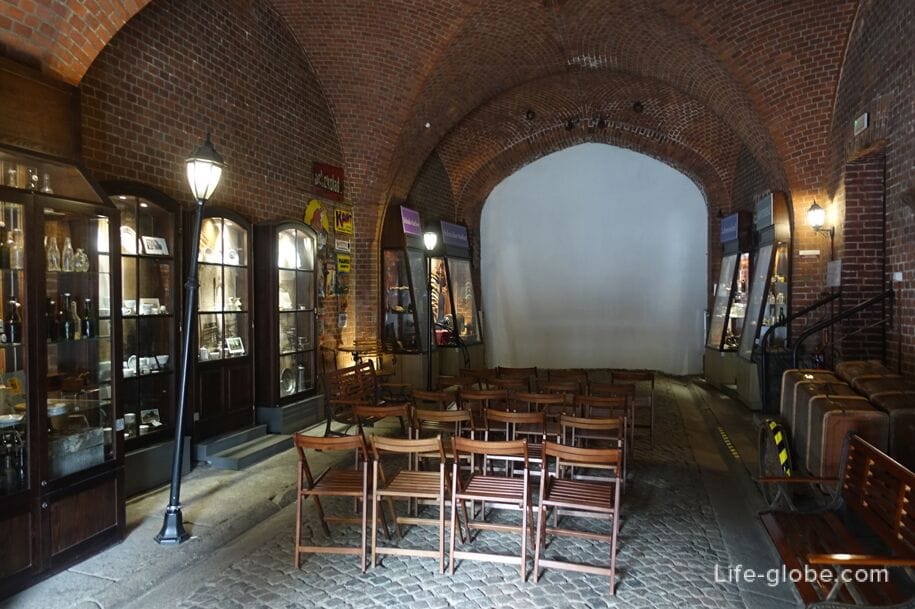

In 1420, the first pharmacy in Altstadt was opened, and the first Konigsberg pharmacist was sworn in almost 100 years later. In the middle of the 16th century, the first organization of pharmacists was created. In 1914, there were already 27 pharmacies in the city, and in 1983 - 38.
Pharmacies in Konigsberg had very beautiful names: "Lion", "Eagle", "Bear", "Swan", "Sunny", "At the white eagle", "Anchor", "Dorothea's Pharmacy", "Louise's Pharmacy", etc.
Pharmacies sold, in addition to medicines, marzipans, candles and wine for bottling.
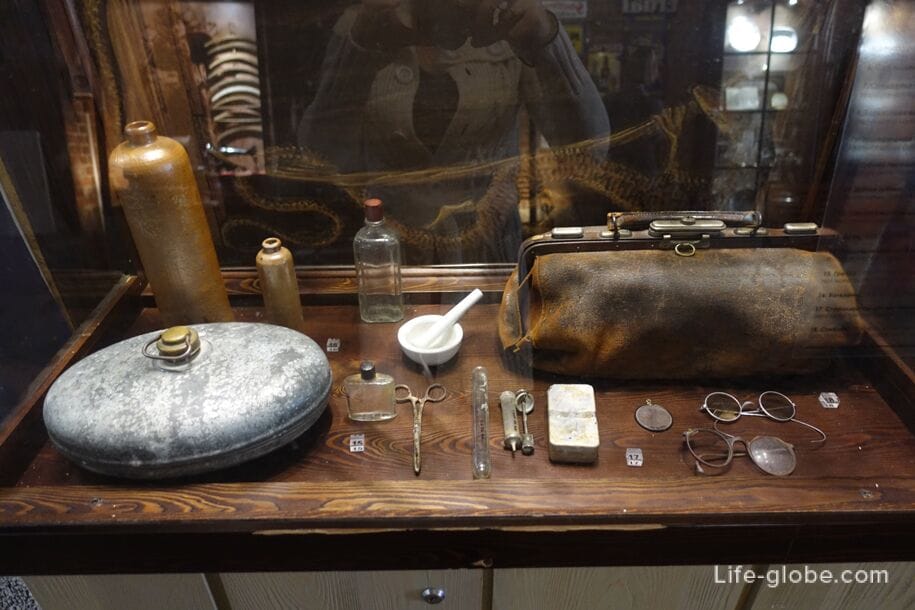
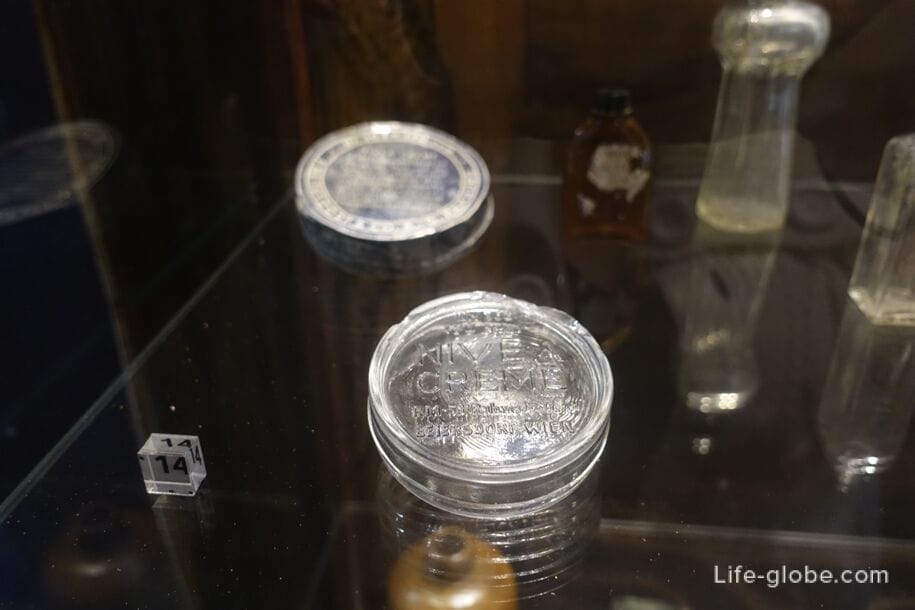
Next to the "Pharmacy" showcase there is a "Grocery Store" showcase, on the shelves of which various types of containers are presented: packages, cans, bottles of products from local manufacturers of Konigsberg and neighboring territories of the late 19th - early 20th centuries.
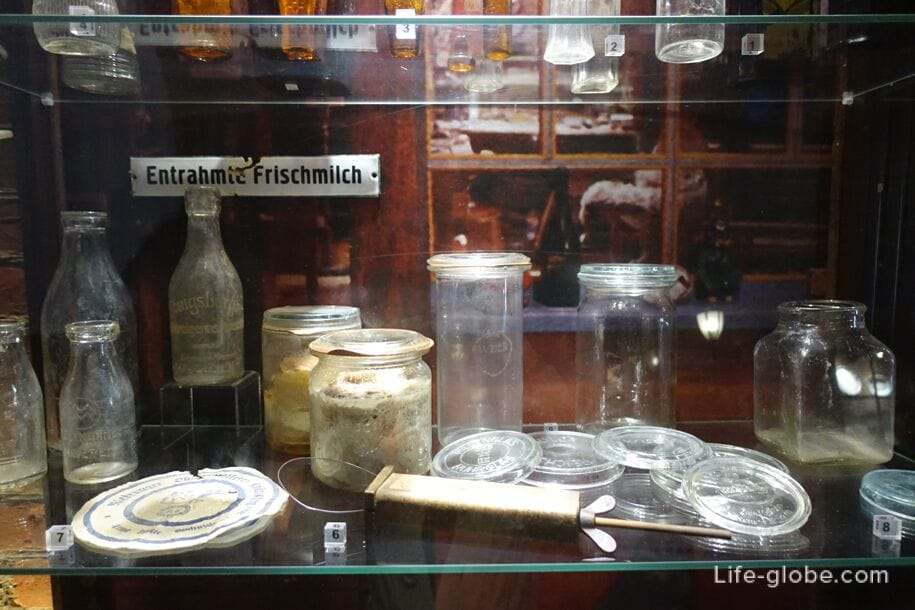
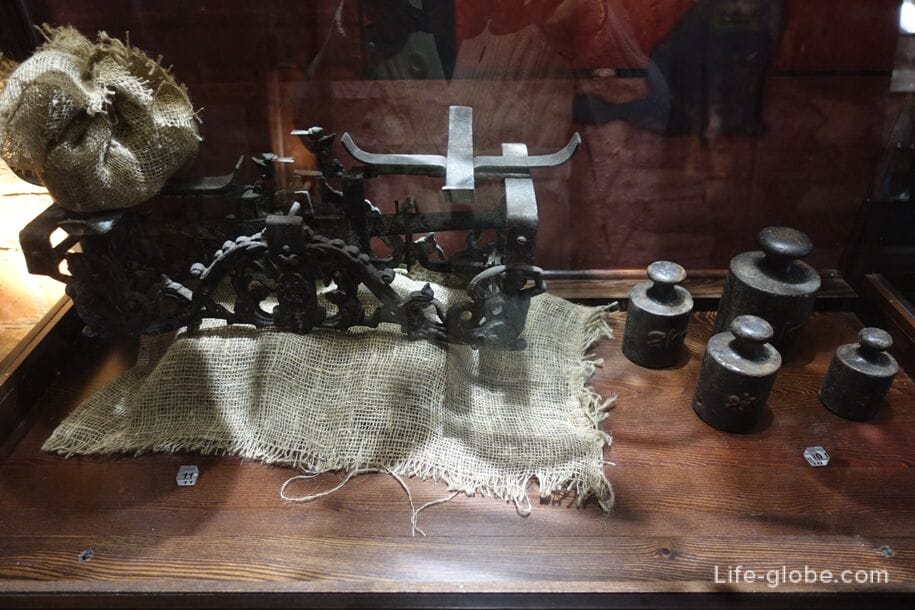
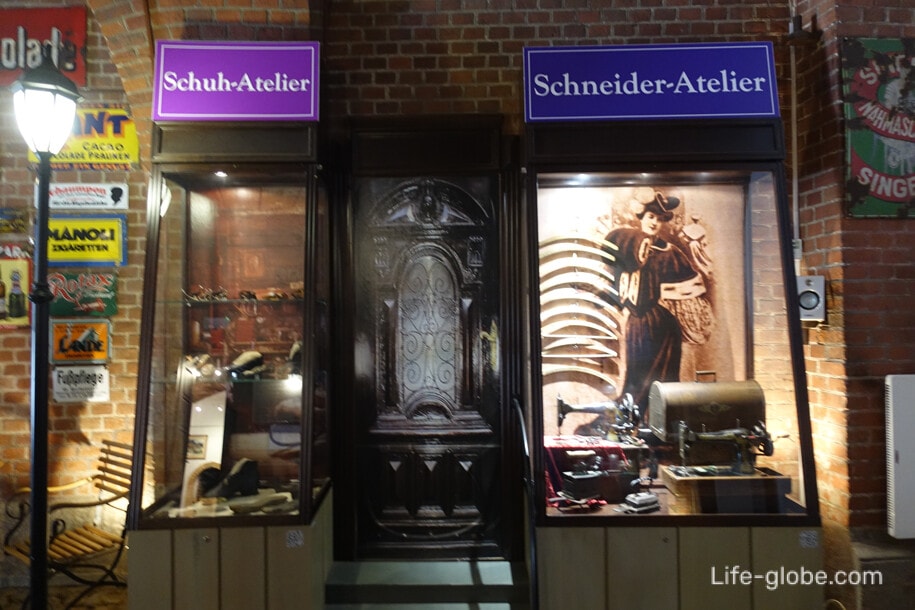
The inventor of the prototype of the modern sewing machine is an American Isaac Merritt Singer. In 1851, Singer patented his typewriter and put up a prototype for sale, valuing it at $ 100. The sewing machine became the first household appliance that allowed for the repair of clothes at home.
In 1854, Singer and lawyer Edward Clark founded I.M.Singer & Co., headquartered in New York. By the end of the 19th century, the Singer company produced 600 thousand sewing machines a year, which were supplied to many countries. In Konigsberg there were several branded stores specializing in the sale and maintenance of Singer sewing machines.
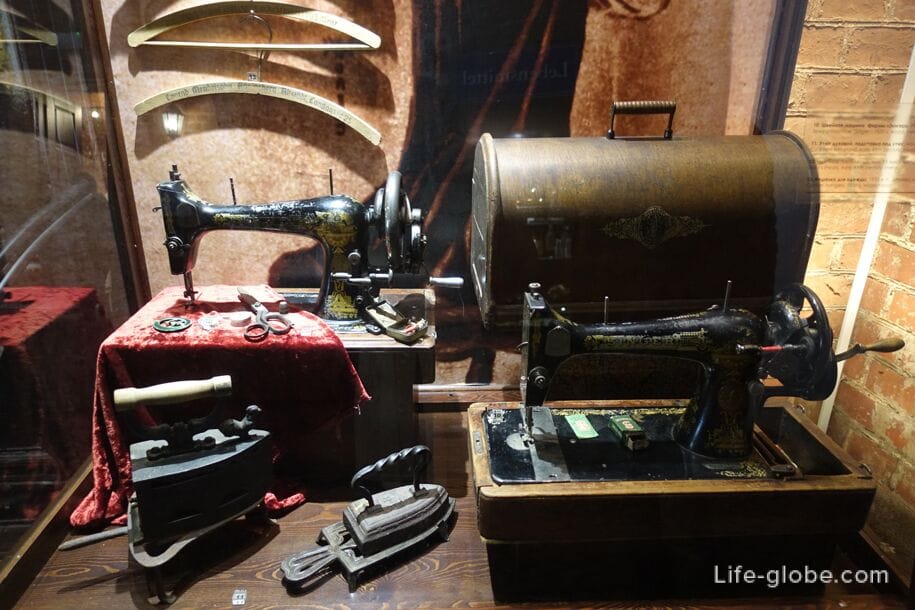
One of the favorite pastimes of local citizens in winter was ice skating. One of the most popular artificial ice rinks was located in the Yuzhny Park. In summer there was a boat station, and in winter there was an ice rink located in the pavilion "East Prussia".
Shoes and skates of the late 19th - early 20th centuries can be seen in the window of the Shoemaking Workshop. These skates were found in 2007 during the cleaning of the Upper Pond.
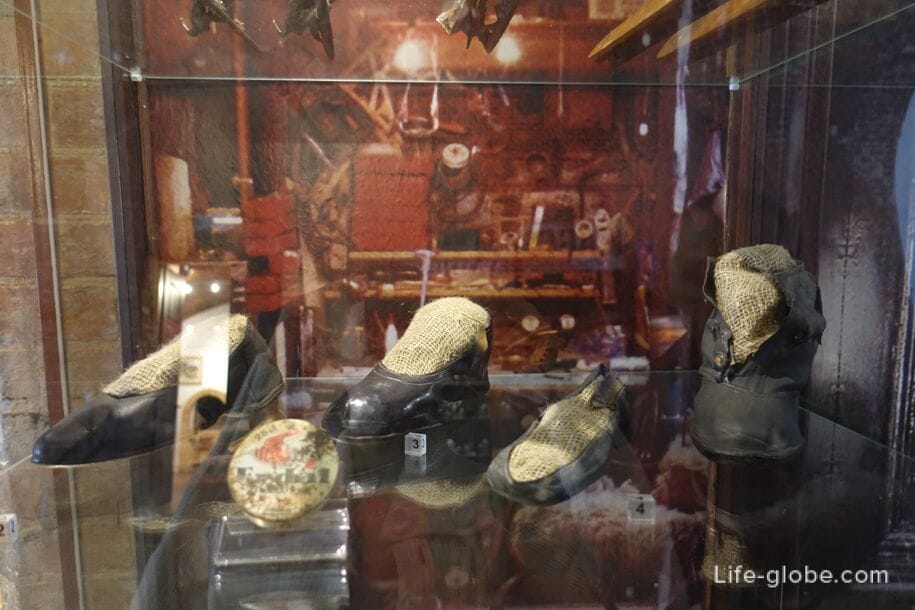
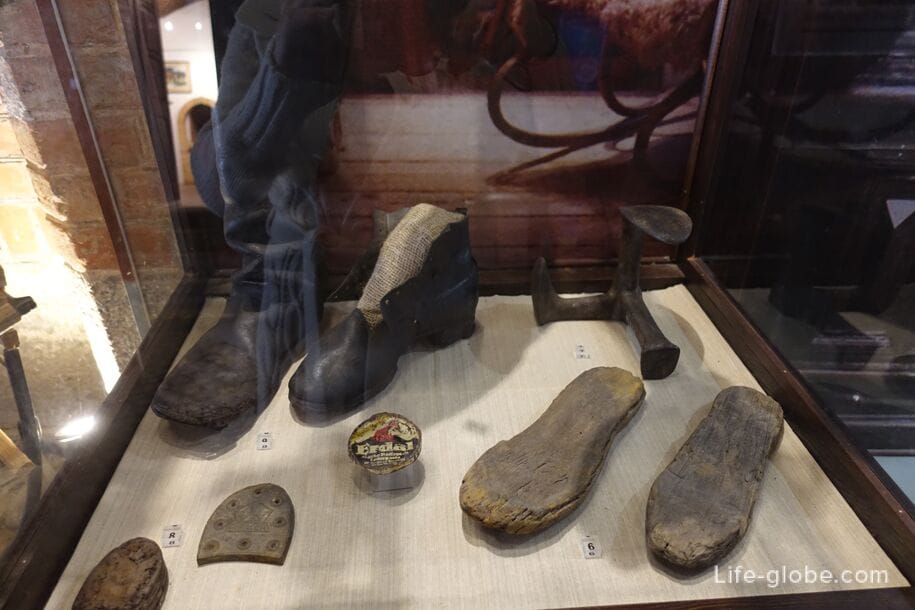
Koenigsberzhtsy preferred to receive guests and meet with friends in cozy cafes. The number of cafes and pastry shops in the city was constantly growing. At the beginning of the 20th century, there were about 20 of them in Konigsberg, and during the Second World War - 32.
The Koenigsberg cafe consisted, as a rule, of two or more halls: one larger and one (or several) smaller.
The museum's showcases feature branded tableware from a number of Koenigsberg cafes. For example, cups from Muller's confectionery, from Amende's confectionery, which was located opposite the zoo, a cup and a creamer from a restaurant located in the building of the Northern Railway Station. Here you can also see tin boxes from the famous Konigsberg marzipan.
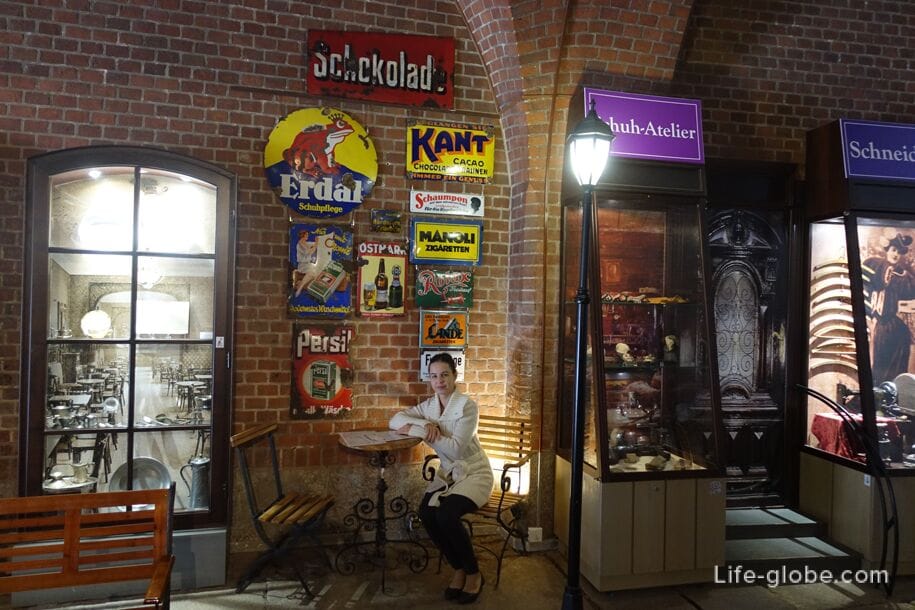
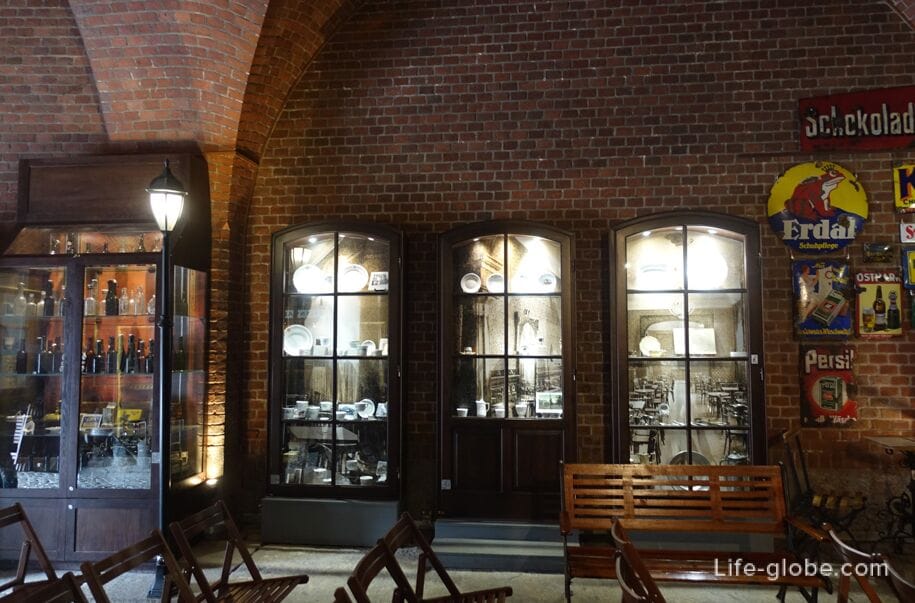
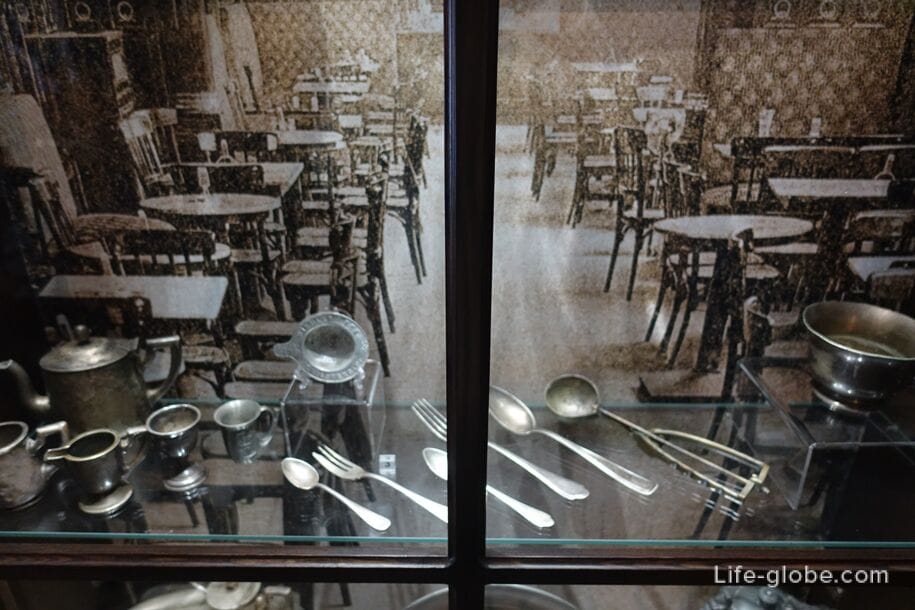
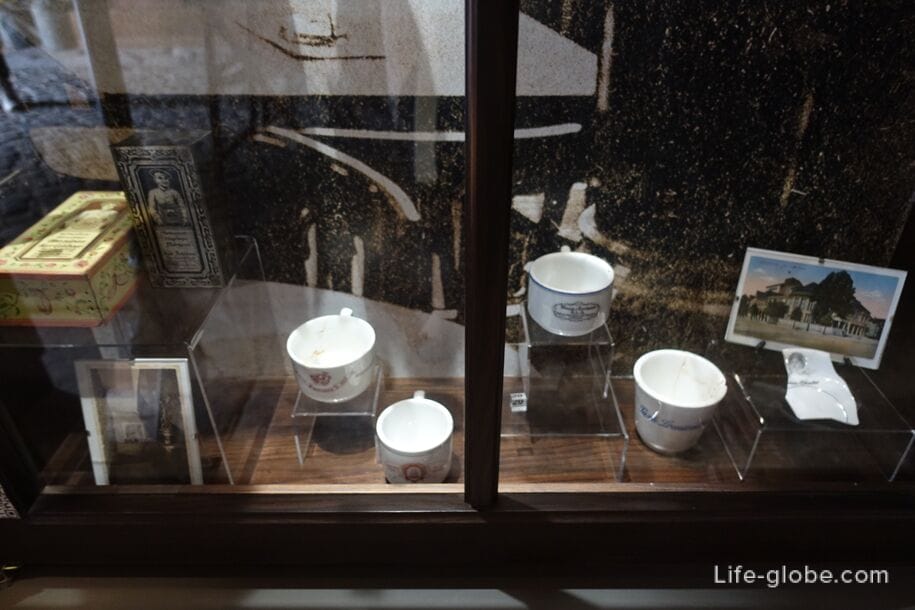
A variety of drinks were produced and sold in pre-war Konigsberg. Beer has been one of the most favorite drinks of local citizens for a long time. According to German legend, the patron saint of brewers was the fabulous king Gambrinus.
The signature drink of East Prussia was "Barenfang" ("Bear hunting"). The company that produced this drink ("Toike and Kepin") still exists, still producing this drink in Germany.
"Barenfang" is a viscous honey schnapps of golden yellow color with an exquisite aroma. In the people, "Barenfang" is a universal remedy.
Various bottles, corks and smoking accessories are presented in this showcase of the museum.
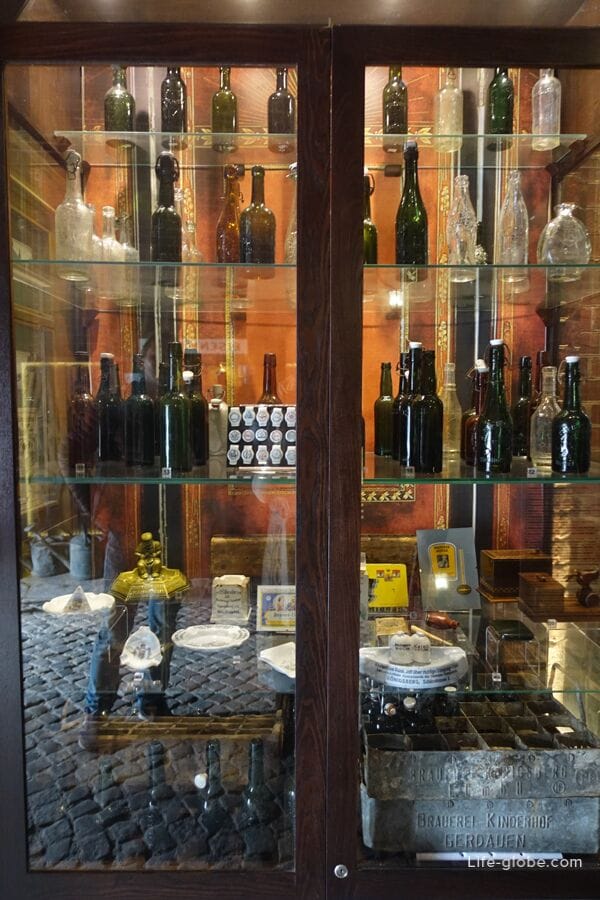
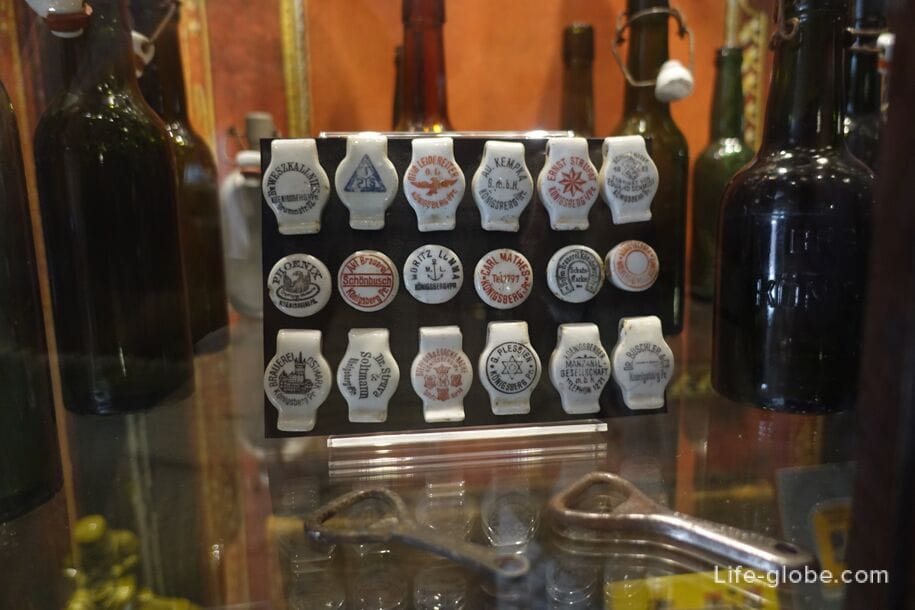
Konigsberg is a city where the number of newspapers and magazines has been steadily growing. And modern Kaliningrad is trying to keep up with this tradition.
The first irregular newspaper in Konigsberg was printed in 1618. And the first weekly newspaper "Avizen" (translated from the German "Vedomosti") was published by Lorenz Segebaden in 1623. The cost of the newspaper was 10 pfennings on weekdays and 20 on Sundays.
Also in Konigsberg newspapers were published in foreign languages: Polish, Lithuanian, Masurian.
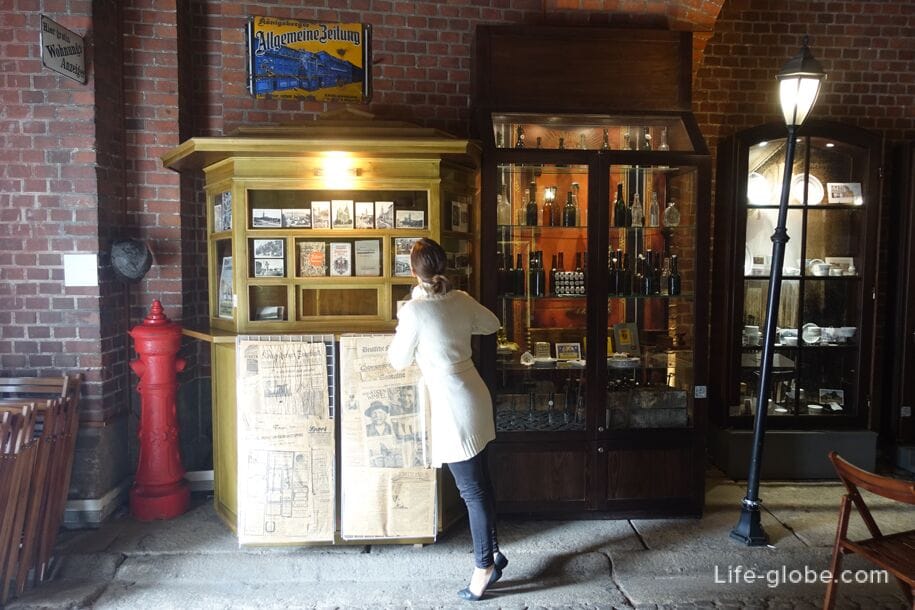
Household and economic activity in Konigsberg has always been active. Hardware stores sold a wide variety of household items.
In this showcase of the museum are:
- a primus oil-free burner for cooking, invented in 1892 by Franz Wilhelm Lindquist, who later founded the Primus company;
- ramming - used in the construction of paved roads;
- fireman's hook - designed for disassembly during fire extinguishing of buildings;
- shaft - serving for harnessing a horse to the root. etc., in total, more than 80 household items are presented in the shop.
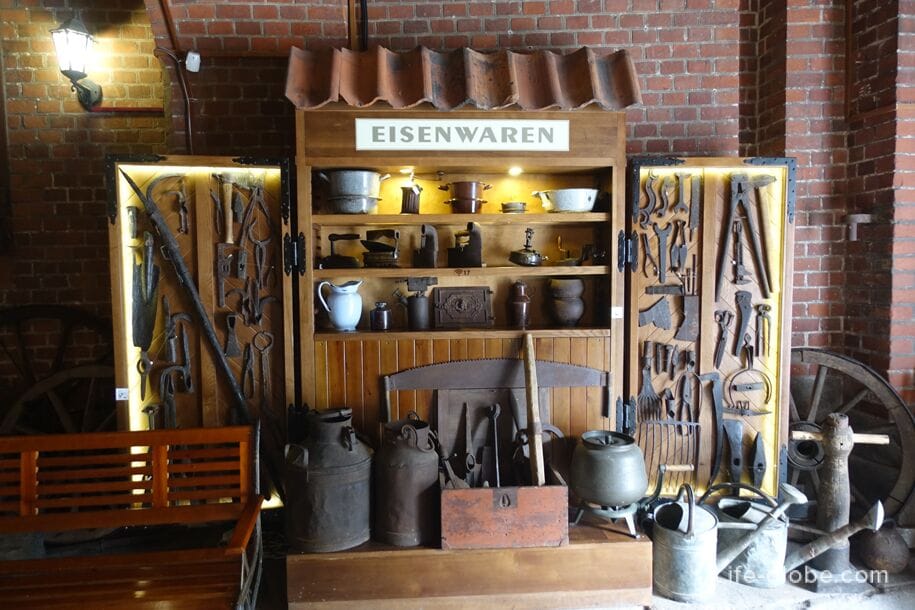
Leaving the second hall of the museum, we get into the Courtyard of the Guardhouse (exit to the outside of the Friedland Gate).
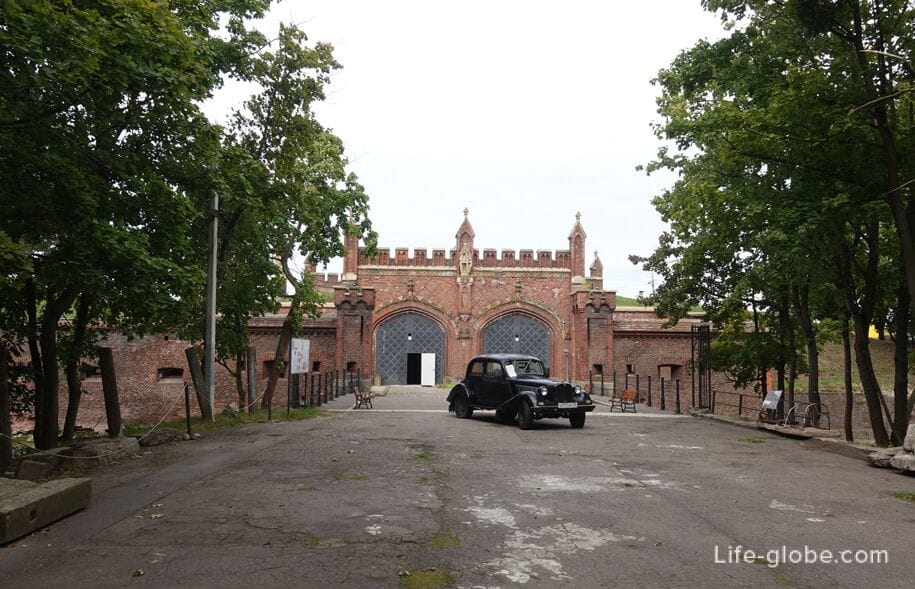
In the courtyard, the Kaliningrad-Koenigsberg transport system is presented in two exhibits.
Mercedes-Benz car 1938-1942.
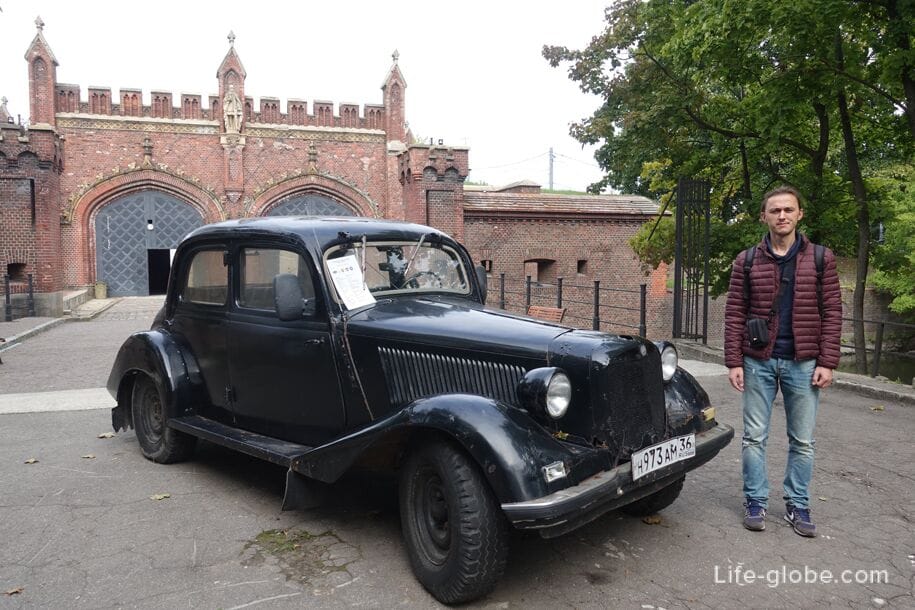
Tram
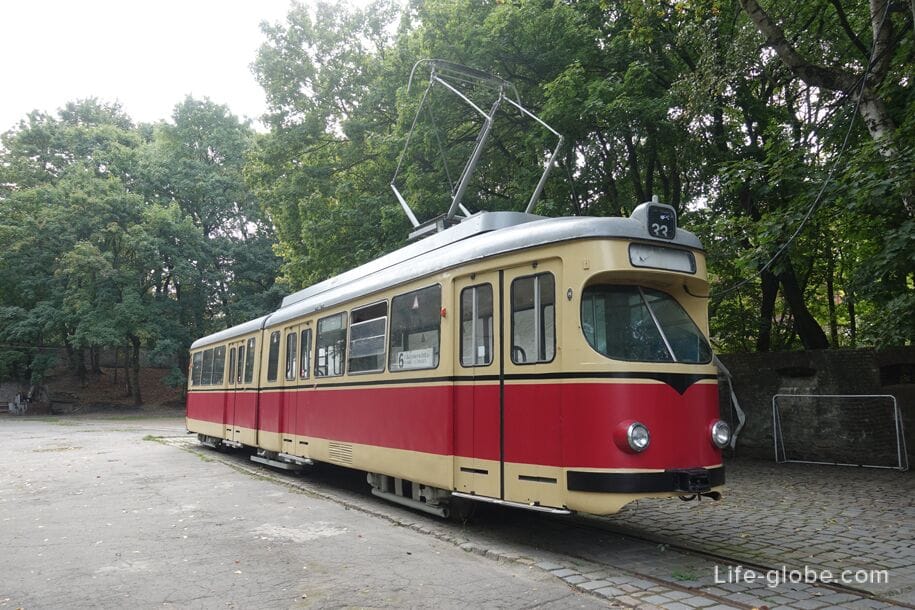
In the third hall of the museum there is a permanent interactive exhibition "The Road to the City".
This exhibition is a continuation of the theme of a Virtual walk through the streets of Konigsberg. Created with the help of artistic and multimedia means, a collection of exhibits from the late 19th - first half of the 20th centuries.
The exposition "The Road to the City" allows you to fully plunge into the daily life of Konigsberg with its developed infrastructure. Interactive showcase complexes located on the original cobblestone pavement of the Friedland Gate roadway invite you to take a walk around the old town.
Here you can visit a cinema, sign at the post office, put a stamp and "send a postcard", find out what toys the children of the beginning of the last century played with, look into a residential building, while taking a few original pictures for memory.
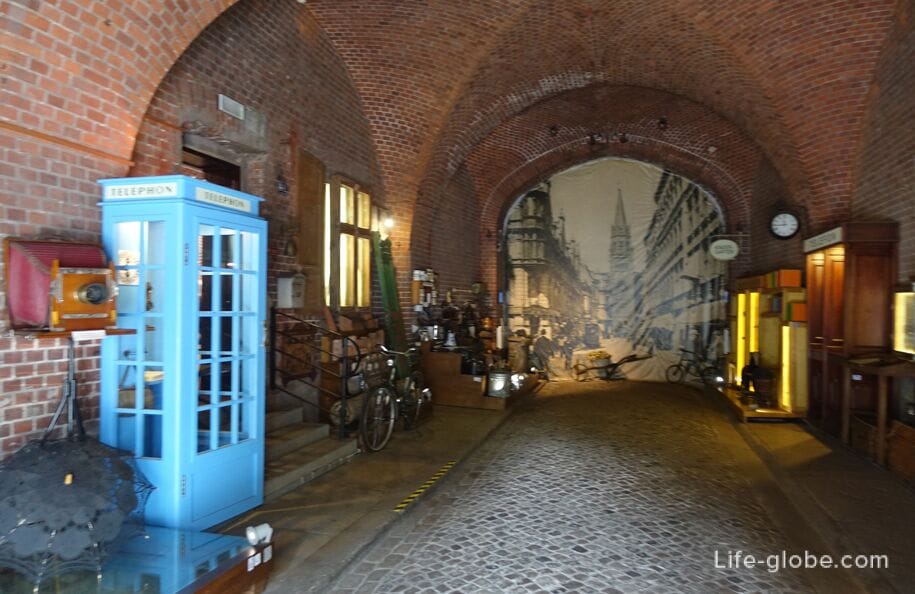
The official date of the invention of photography is January 7, 1839. On this day, the method of obtaining an image on silver salts, discovered by Frenchman Louis Jacques Dagger, was unveiled. In his honor, the first photos were called daguerreotypes.
It is not known when the first photographs of the city of Konigsberg were taken. Of course, there were daguerreotypes of the 1850s, quite possibly, and the 1840s, however, they have not reached us.
The earliest accurately dated photograph shows the celebrations on the occasion of the coronation of William I in the courtyard of the Royal Castle of Konigsberg in October 1861.
By 1910, there were more than 100 "art cabinets" in Konigsberg, and dozens more photographers with "portable" devices on tripods were scurrying around the city.
There is a telephone booth next to the composition "Photo Studio" in the Friedland Gate Museum.
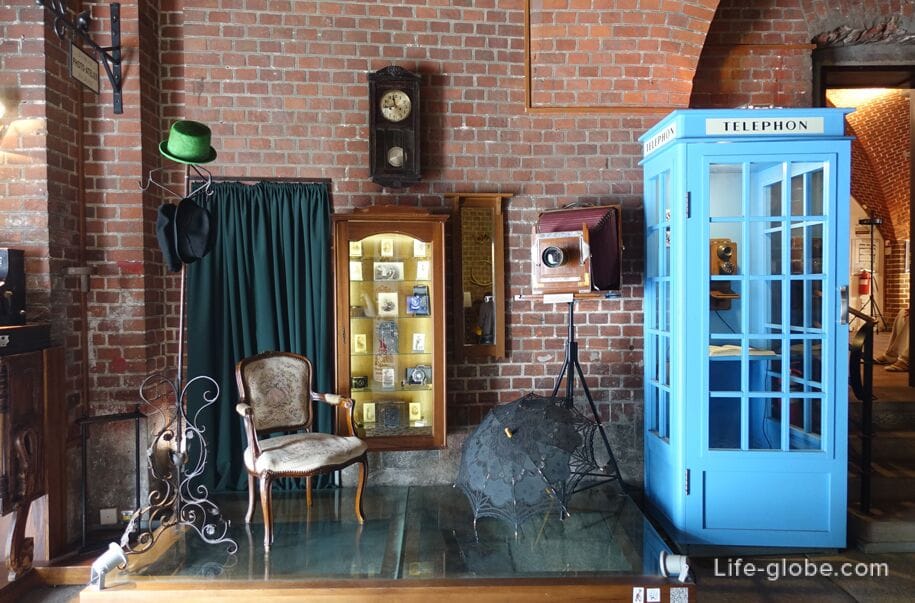
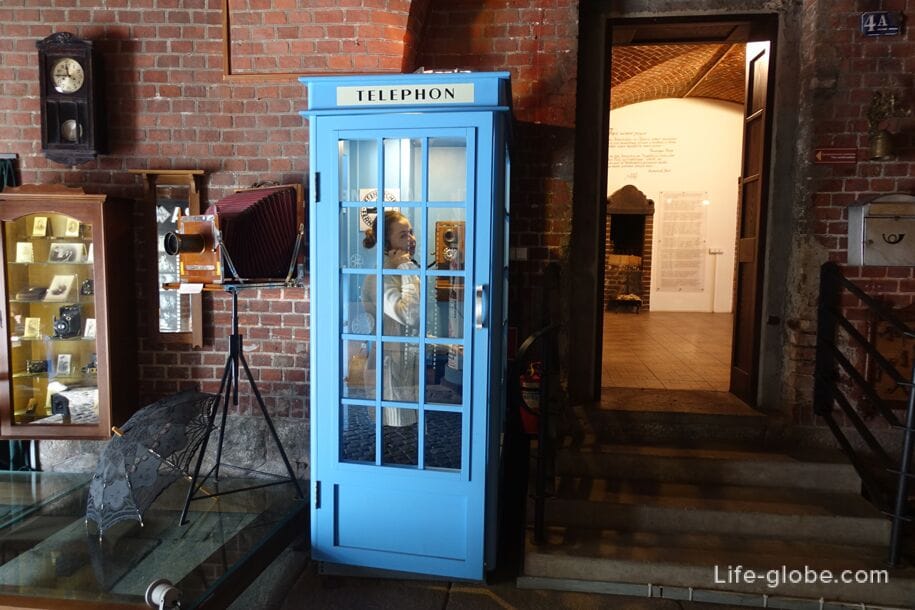

Plate camera, single-lens with sight on a frosted glass screen, 1892.

The first short film, silent and black-and-white, was shown in Konigsberg in 1901, at the entertainment institution "Julhental".
In total, about 20 cinemas were built in Konigsberg in the first half of the 20th century, and 30 cinemas operated in the pre-war years. Many of them had romantic names: "Gloria", "Astoria", "Urania", "Victoria", etc.
The largest and most beautiful cinema in East Prussia was the Alhambra cinema (the building has not been preserved). The premiere screenings of many films took place within the walls of this cinema and famous stars such as: Marika Reck, Otto Tebur, Walter Rilla, Henny Porten and others came.
In addition to films featuring such stars of European cinema as Brigitte Helm and Marlene Dietrich, the Konigsberzhtsy also loved Russian silent films.
Tickets to the sessions were cheap, and the main revenue came from the sale of beer, spirits, snacks and coffee with marzipan.
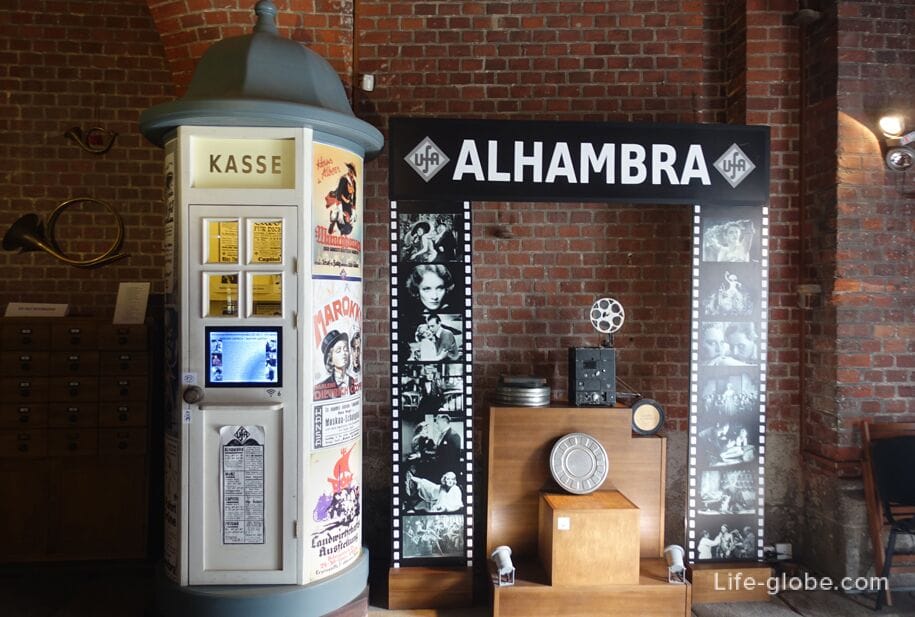
In the 19th - 20th centuries, the main means of communication in Konigsberg were the post and telegraph. In 1884, the Main Directorate of the Konigsberg Post Office had 166 post offices. In 1887, a new building of the main post office was built, in which it was located until 1945 (in Kaliningrad - the Rostelecom building on Leninsky Prospekt).
Each railway station had its own post offices.
The postman's profession was considered strictly male, and it was only in 1915 that women began to master it.
It is known that the first Prussian postage stamps appeared in Konigsberg in 1850. The first telegraph line "Konigsberg-Braunsberg" was opened in the city on July 20, 1853.
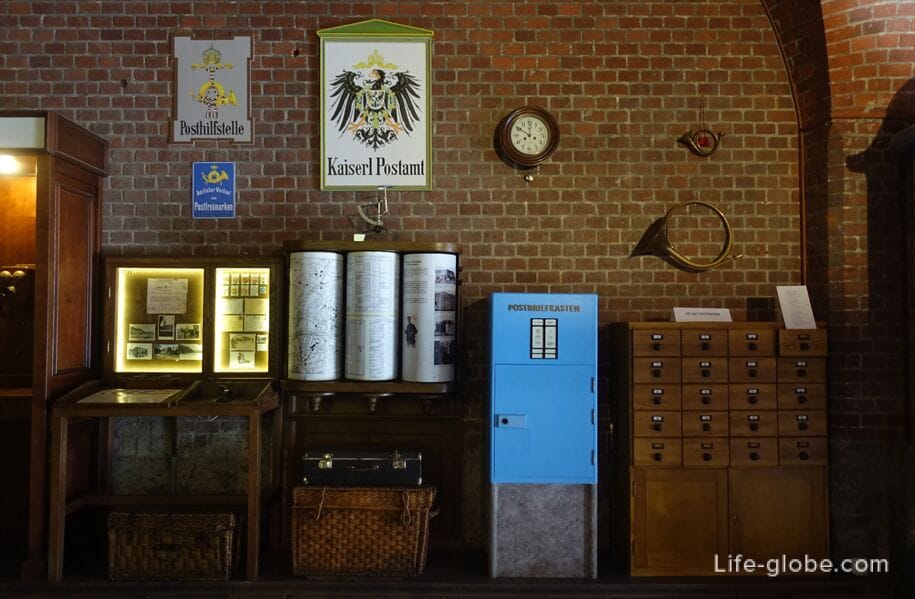

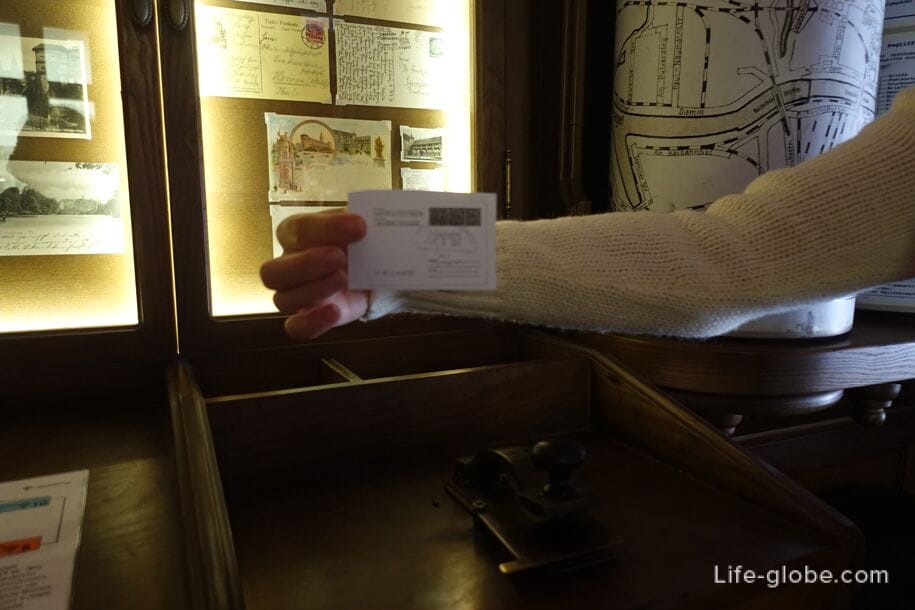
Telephone sets of the early 20th century.
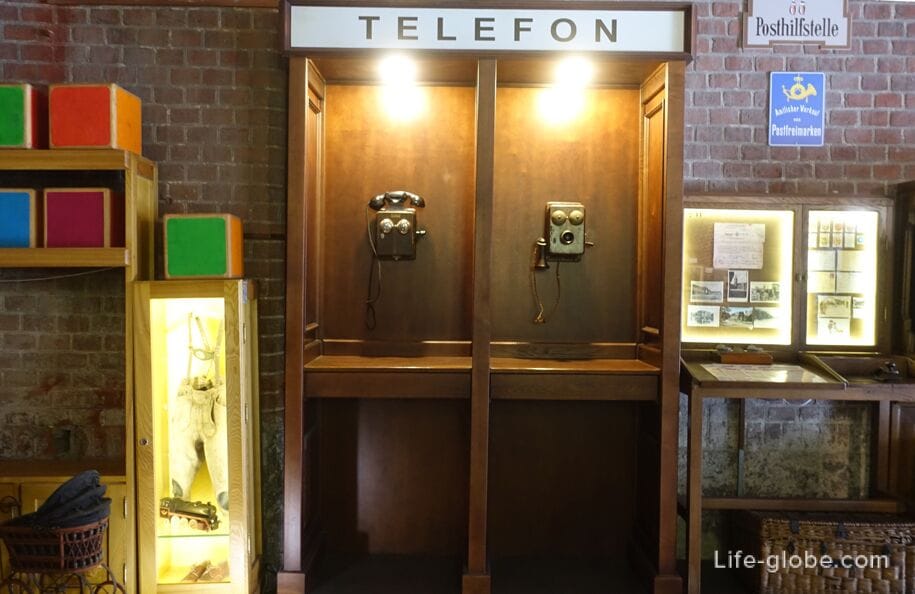
In a low shelf, in each drawer, you can see the exposition items of the "old" Konigsberg. For example:
- handbag-purse and paper money of the period of inflation, 10 billion marks, Konigsberg, 1923;
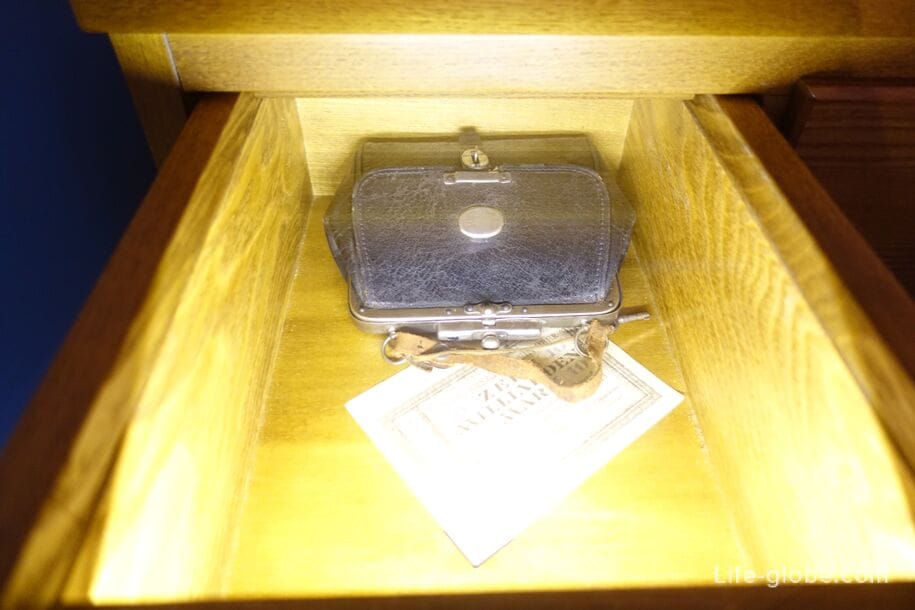
- foreign passport, 1930;

- notebook, 1910, pencil, pince-nez in a case;
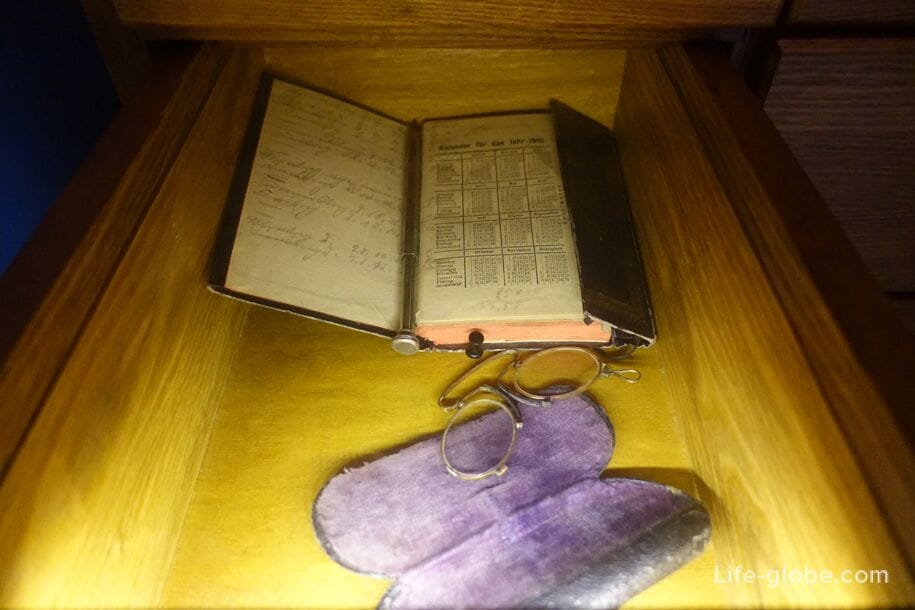
- carriage clocks for travel, early 20th century;
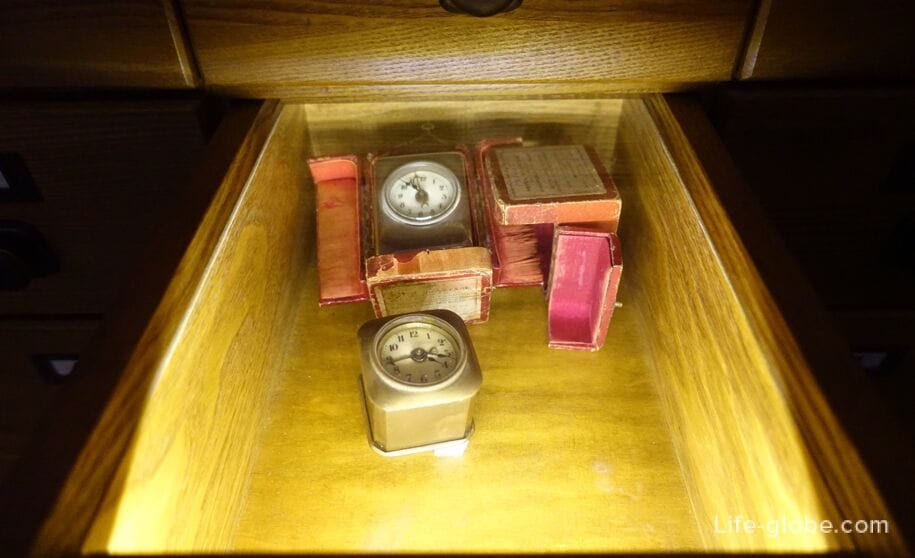
- gloves, 19th century, letter stamped by the Konigsberg post office, 1825;
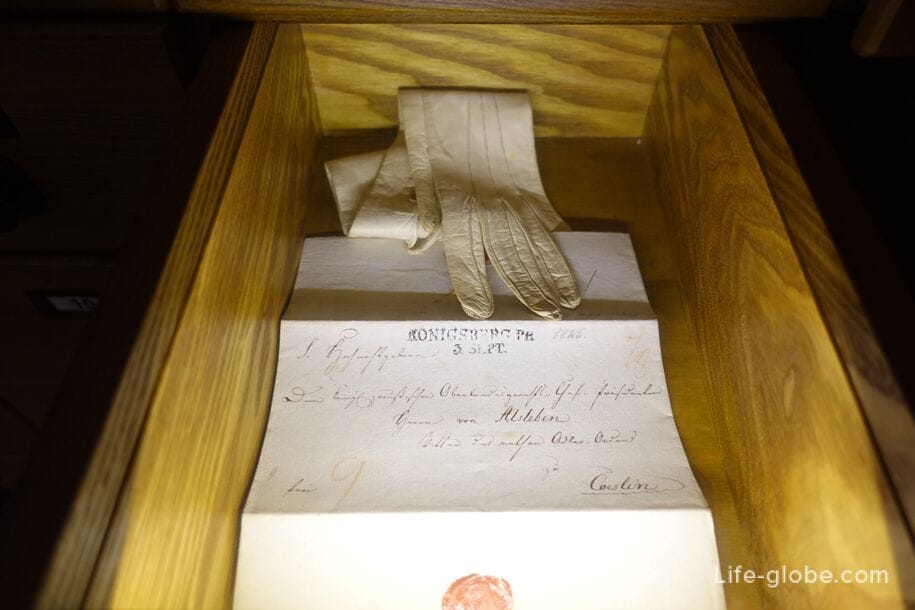
- open letters from Konigsberg;
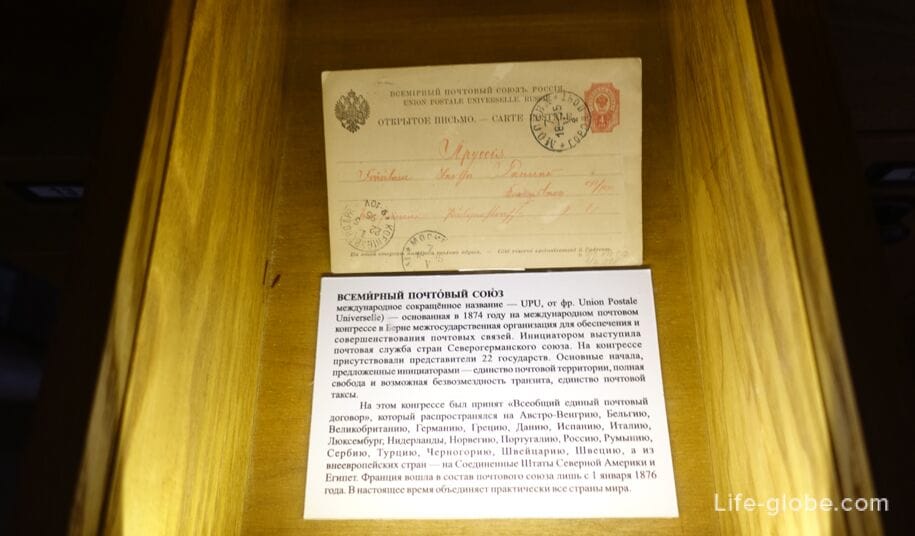
- siegelmark, etc.
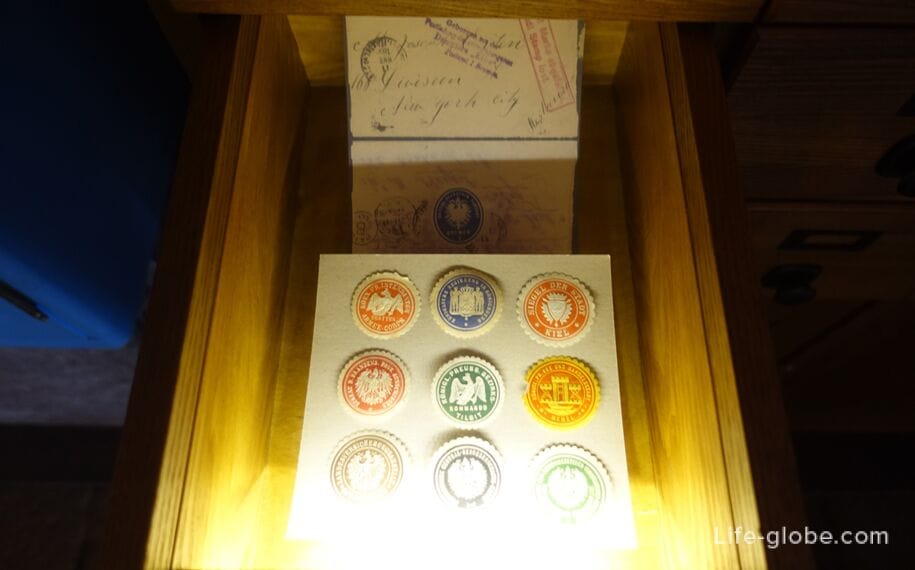
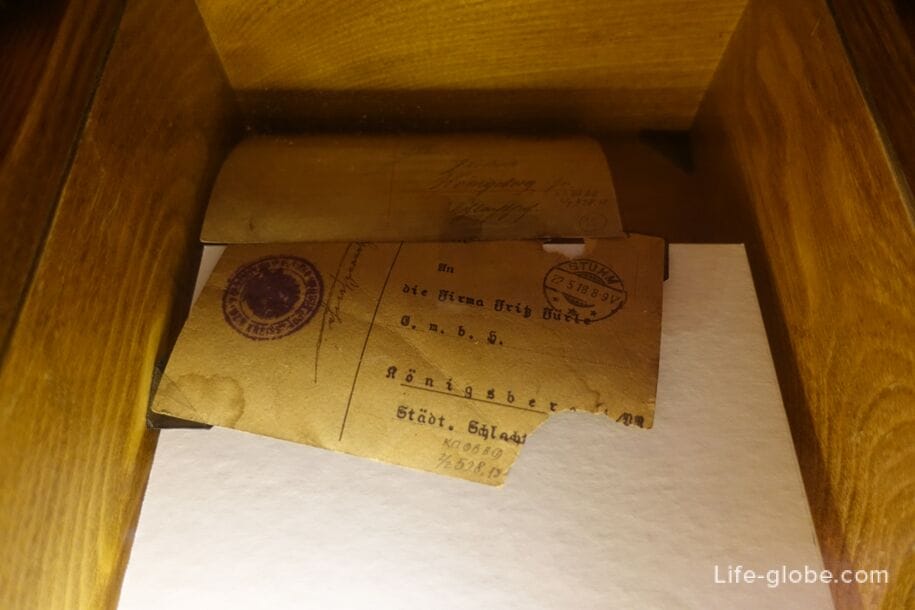

The creator of the world's first kindergarten for preschool children is the famous German teacher Friedrich Wilhelm August Froebel (1782-1852). Friedrich Froebel also developed the basic methods of teaching children in kindergarten, where he gave the leading place in his system to the game and specially created didactic game and toy. These were the world's first educational games and toys for children. And we still use them.
There were about 30 kindergartens in Konigsberg in 1941.
In the window of the Kindergarten museum you can see some toys: cubes based on fairy tales, dolls and soldiers, toy furniture and cars, a steam train and a rocking horse, as well as a children's scooter, animal figures and several small soft toys, including a teddy bear.

This part of the exhibition gives an idea of how the work of a housewife was organized in Konigsberg.
As you know, for such household chores as washing and ironing clothes, the basement rooms were designed in the houses.
Of the electrical appliances used in Konigsberg in the first half of the 20th century, an electric stove, a hair dryer from AEG, a well-known German company, and other items can be seen in the museum's exposition.
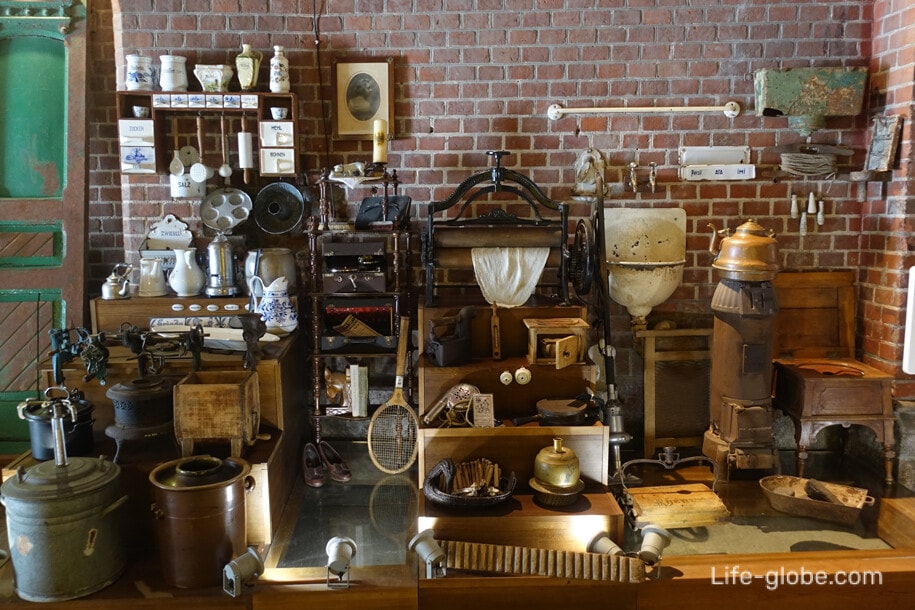



In the museum's collection: bricks, tiles, tiles, piles, pipes, drainage pipes, etc.
Among all building materials, only stone is more ancient than brick.
In Europe, brick became known about two thousand years ago. And in the Middle Ages, it was already widely used not only for construction, but also for decoration and decoration of cathedrals and palaces.
The secret of making bricks was brought to Prussia by the Crusader knights, who built all their buildings and, above all, castles from this material.
In the window you can see several bricks of the 13th-14th centuries. They differ from modern ones in size (they are larger) and in shape. Since they were made by hand, they are not as smooth as modern bricks.
On some bricks there were paw prints of pets.
The rest of the bricks in the collection are of a later date of manufacture. They have already been released in brick factories. On each one you can consider the corresponding brand. The Germans in East Prussia had more than 100 brick factories, which also produced drainage pipes.

The fourth hall of the museum is a hall of rotating exhibitions.
During our visit to the museum, the exhibition "The City of Pure Reason" was held - an exposition depicting the urban life of Konigsberg from the beginning of the 17th century to the end of the 30s of the 20th century.
The plot of the collection covers such topics as: secular, urban and commercial life of the city, the Napoleonic Wars, the development of defensive and urban architecture, as well as the theme of the Enlightenment era associated with the name of the great philosopher Immanuel Kant.
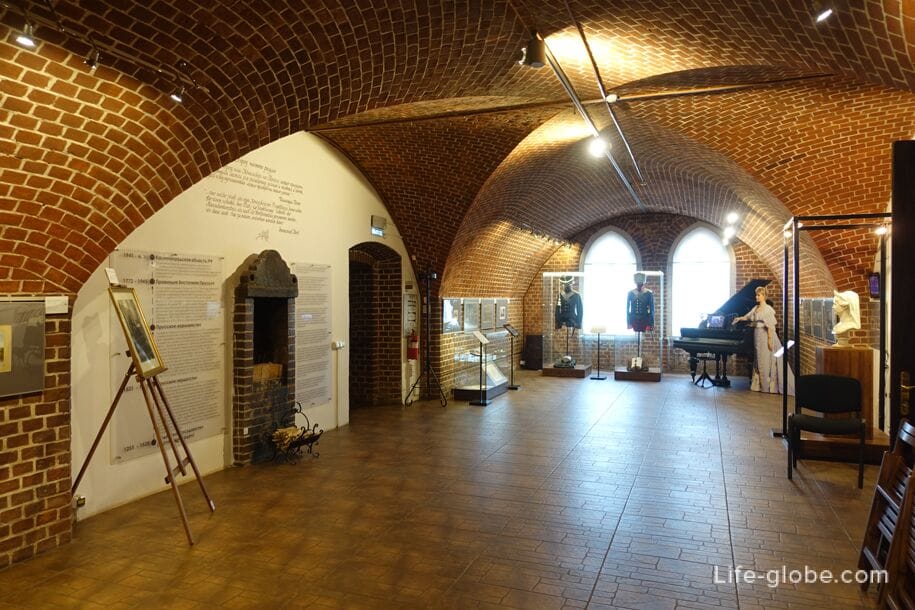
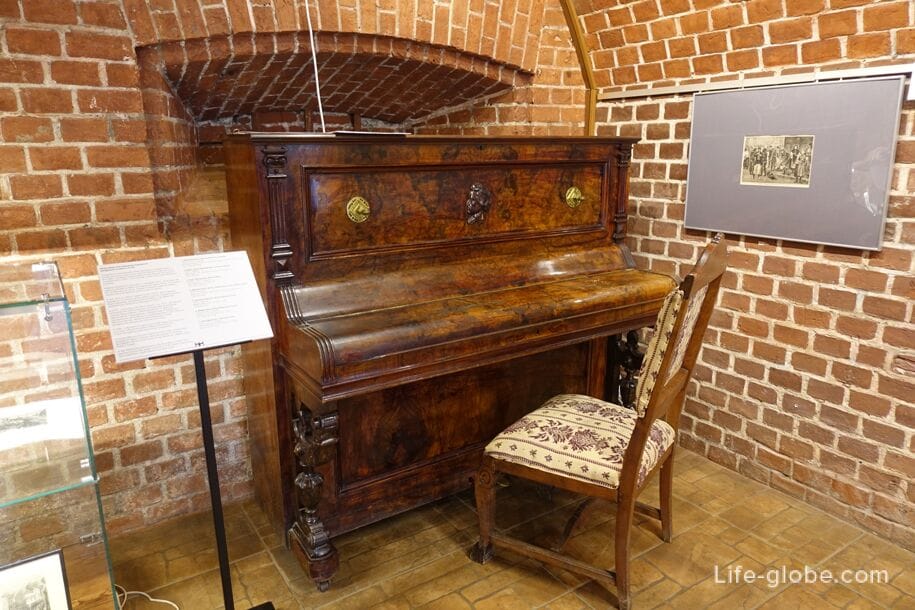
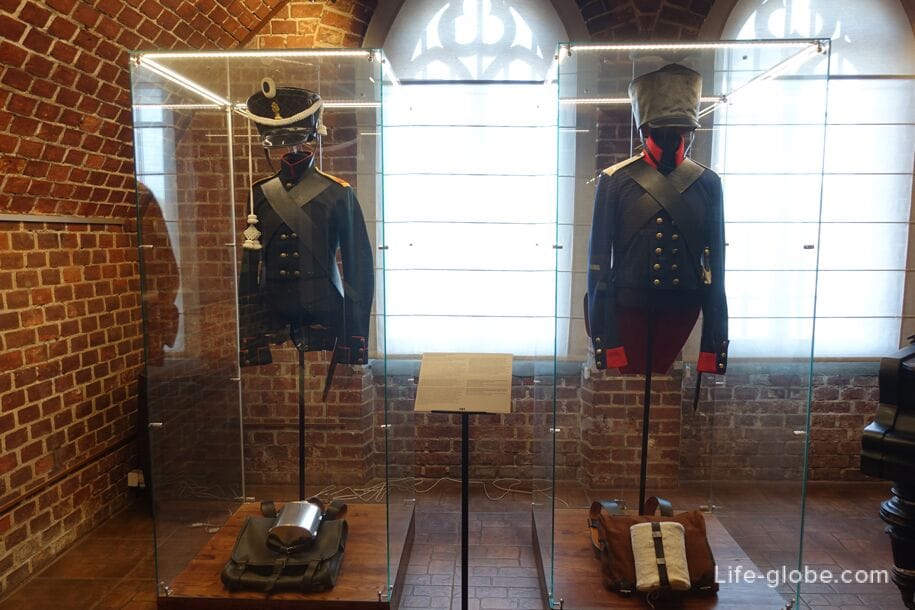
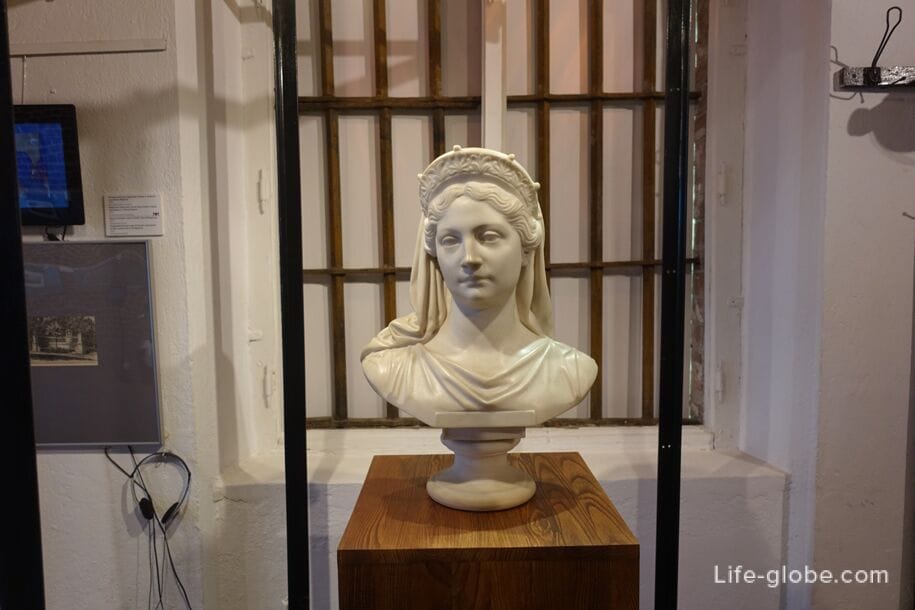
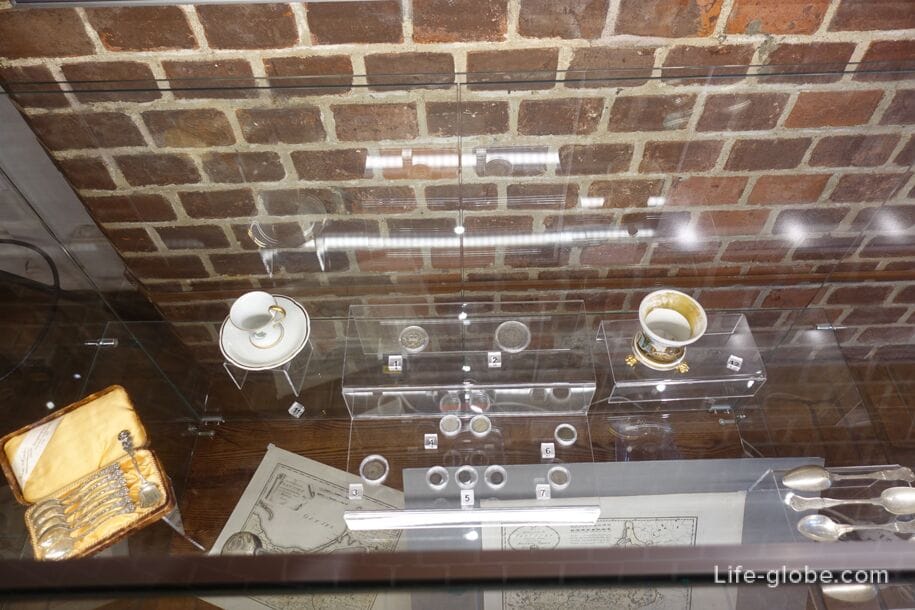
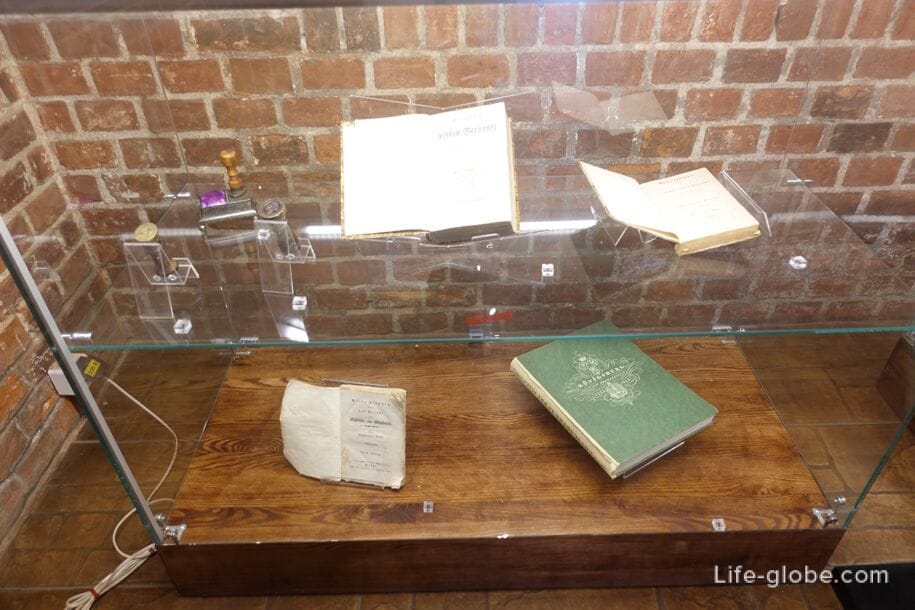
In the first hall of the museum there is a permanent exhibition "Fortress City, garden city".
This exhibition introduces visitors to the history of the emergence of the city as a fortress and the development of its fortification elements over the centuries, and at the beginning of the twentieth century, the transformation of Konigsberg from a fortress city into a garden city.
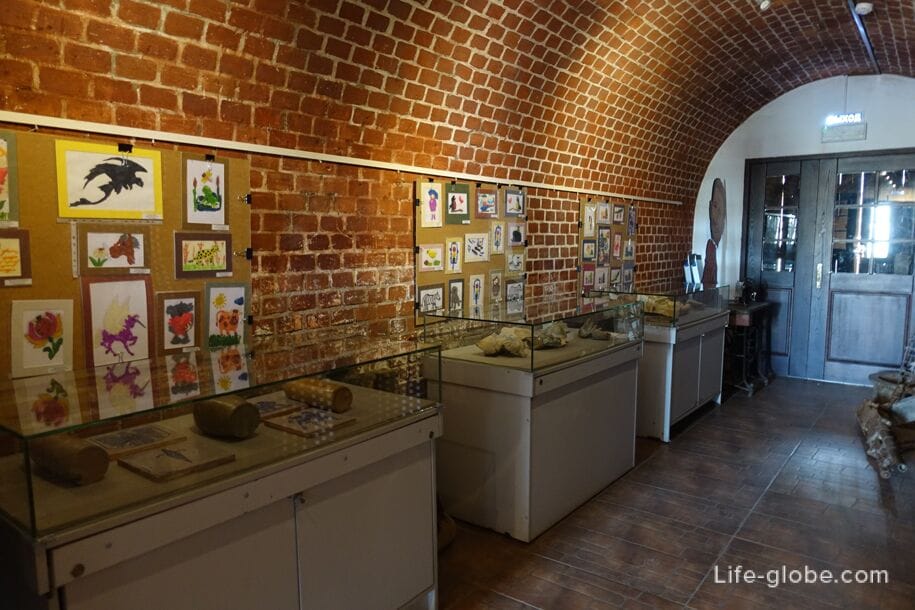
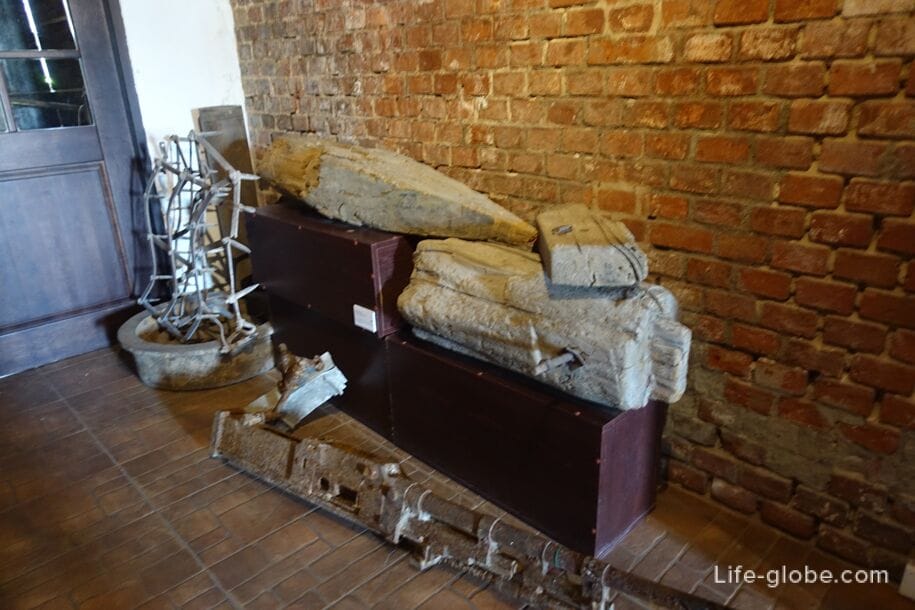
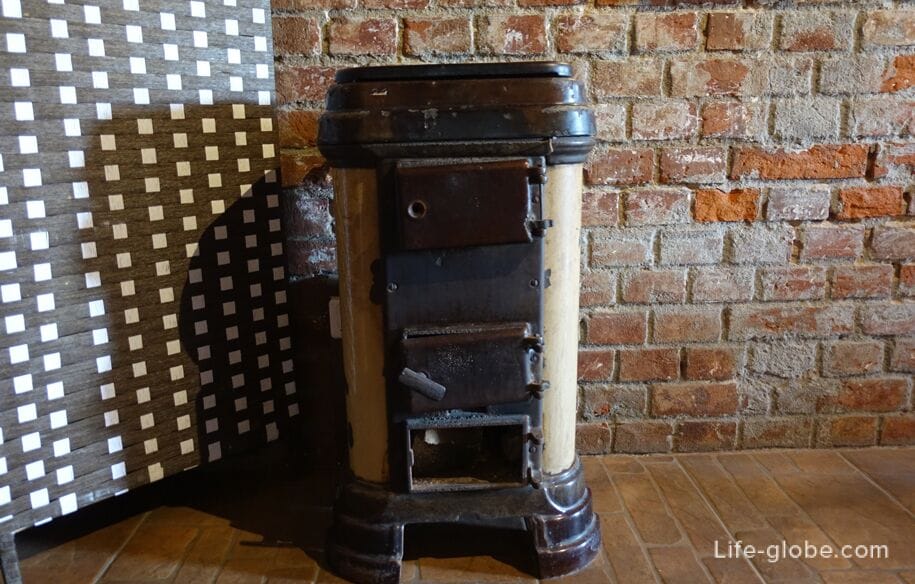
In the second hall of the museum there is a permanent exhibition "Civilization begins with sewage", telling:
- about the oldest sewer system created in the middle of the 3rd millennium BC by the inhabitants of Mohenjo-Daro (the territory of modern Pakistan);
- about the water supply and sewerage system in ancient Rome, medieval Europe and Russia;
- about the water supply and sewerage systems of Konigsberg-Kaliningrad;
- about the WTO - the World Toilet Organization and what it was created for;
- how the International Toilet Day came about; and about many other things.
It would seem why there is such a strange exposition in the Friedland Gate Museum. The answer is simple! There was a museum, but there was no toilet in it for a very long time and visitors, especially from abroad, simply could not believe it. Only in 2009, sponsors from Germany gave money for water and sewer networks: the Municipality of Bremerhaven (responsible for the project, Mr. Klaus Polansky - Claus Polansky) and the Private Foundation of Mr. Klunker (Mr.Klunker).
In the process of communicating with colleagues from other cultural institutions, as well as during visits to various cities and countries, the museum staff realized that the toilet problem is still relevant. That's really the truth - "Civilization begins with sewage..."))
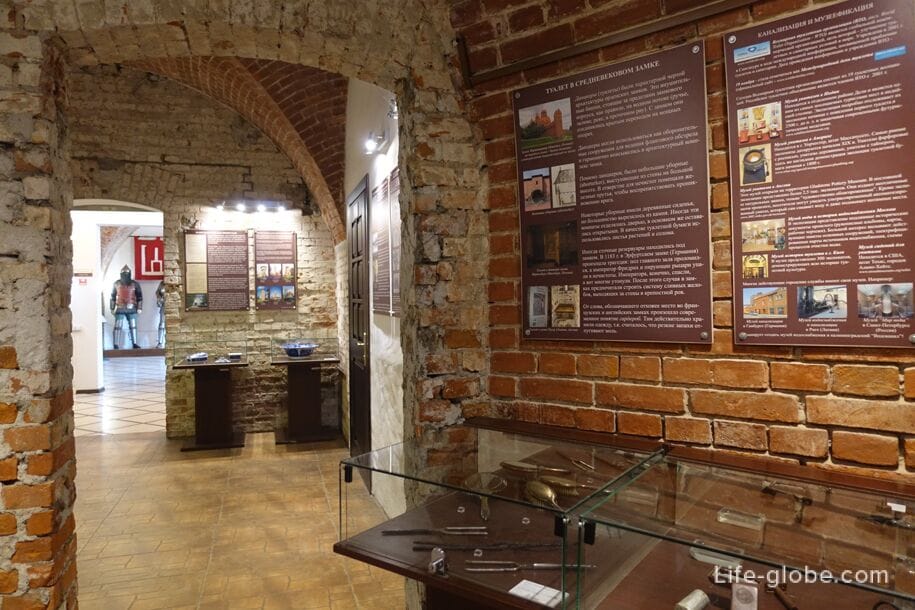
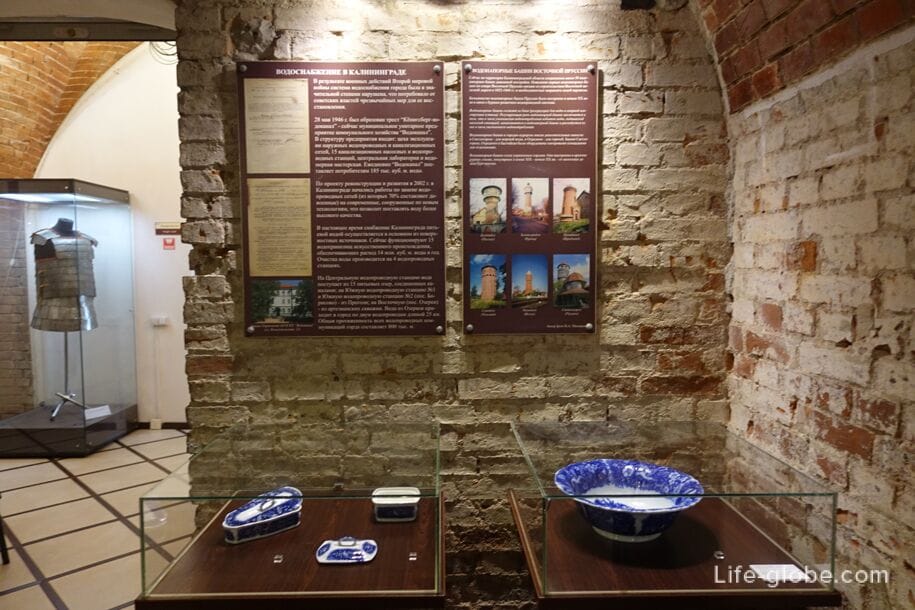
A set for the morning women's toilet, the beginning of the 20th century.
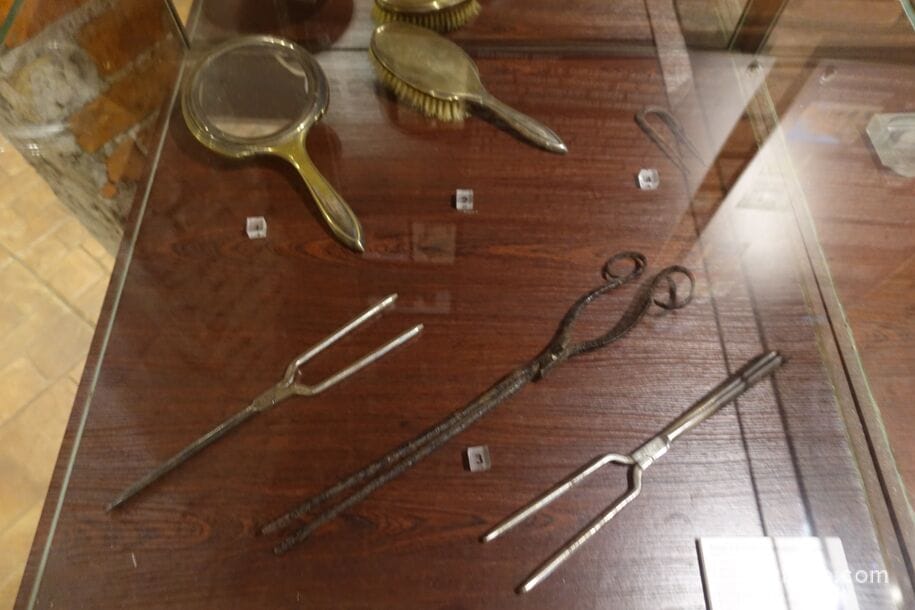
A set for the morning men's toilet, mid-20th century.

The fifth and sixth halls of the museum are the permanent exhibition "Knight's Hall".
In these halls there are exhibits telling about the history of the Teutonic Order and medieval Konigsberg.
In the exhibition: reconstructed knight's armor - chain mail, helmets, shields, recreated using ancient technologies by skilled craftsmen.
The ammunition of medieval warriors, presented in the hall, fully fulfills its protective functions. Similar armor is used at historical reconstruction festivals.
In addition to the ammunition of the knights of the Teutonic Order, the exhibition presents the armor that was in service with the Grand Duchy of Lithuania and the Kingdom of Poland, the standards of the Teutonic Knights, women's and men's medieval costumes.
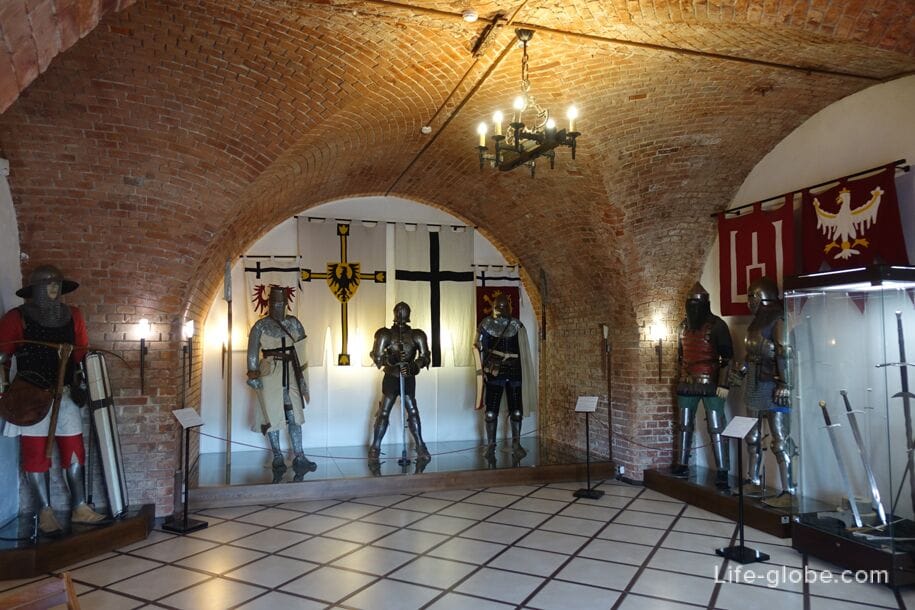

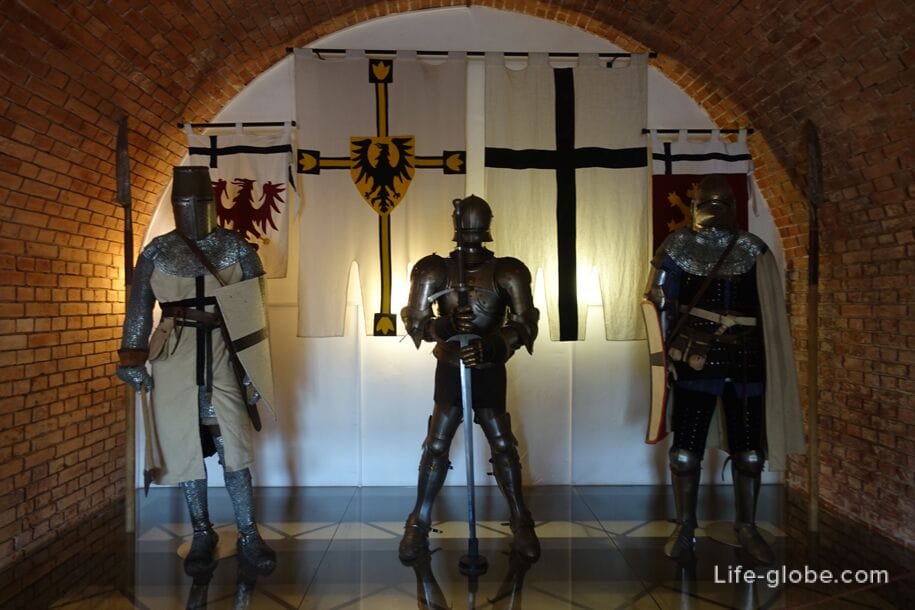

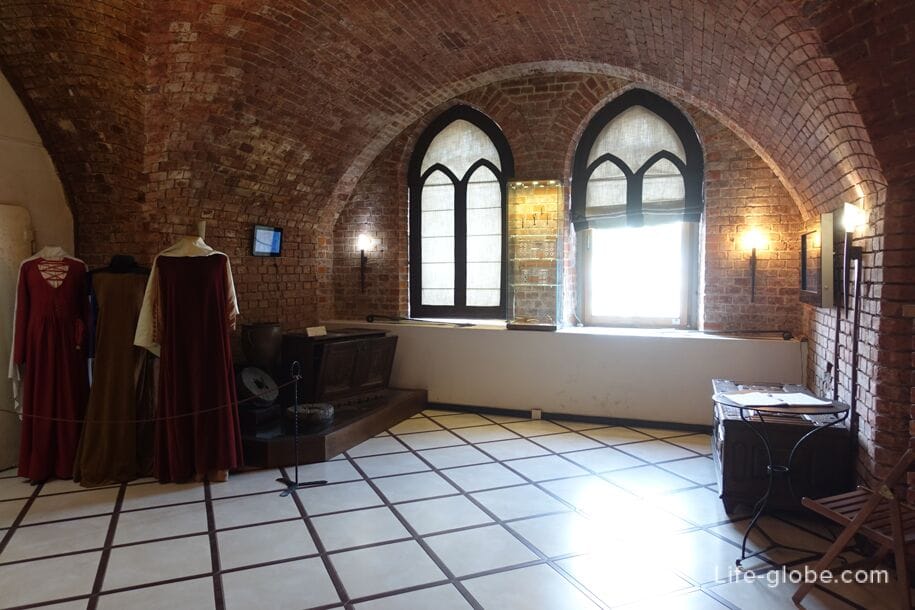
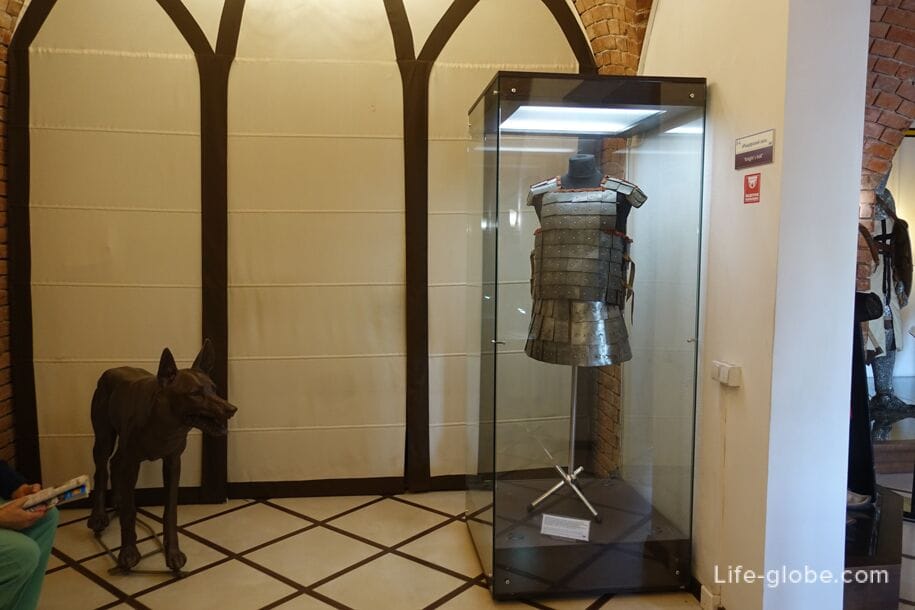
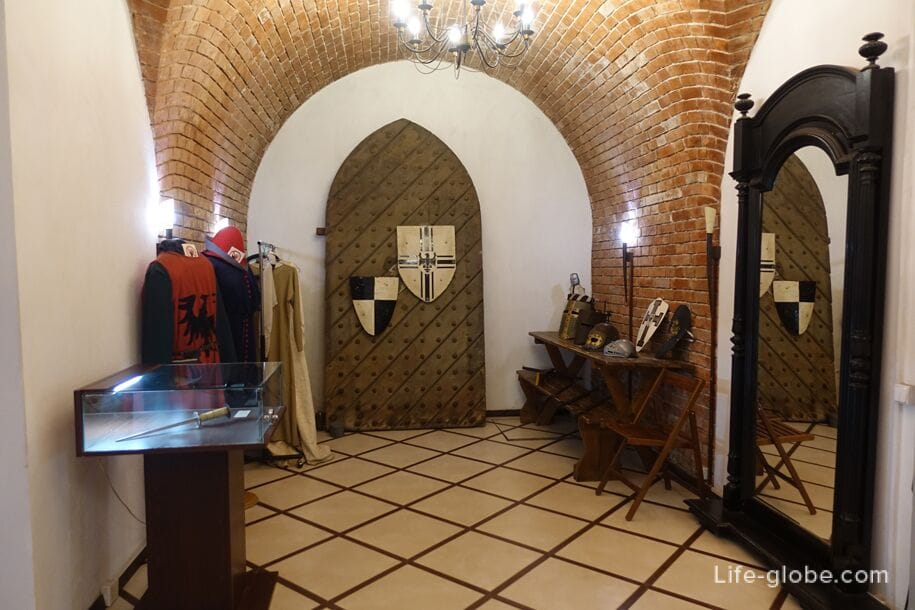
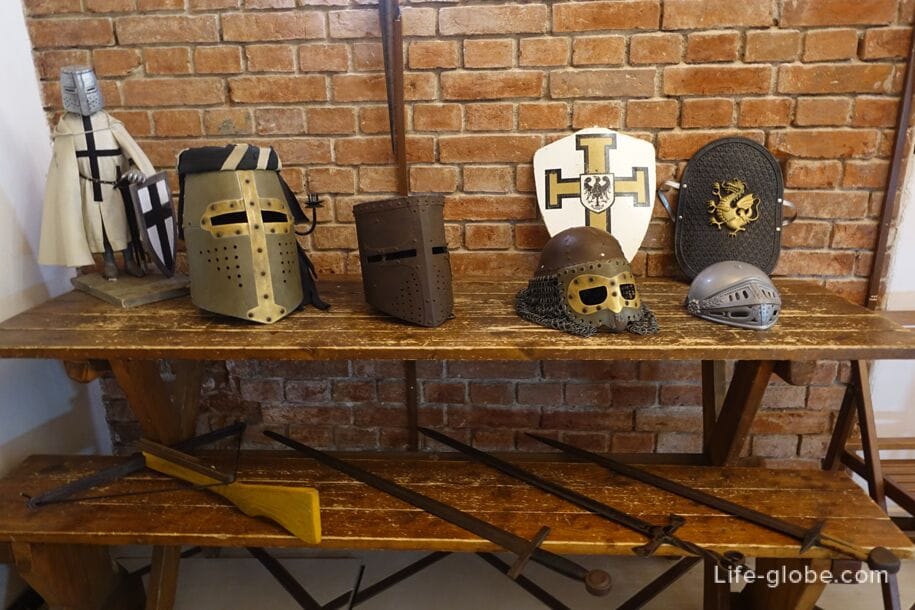
The Prussian Wolf
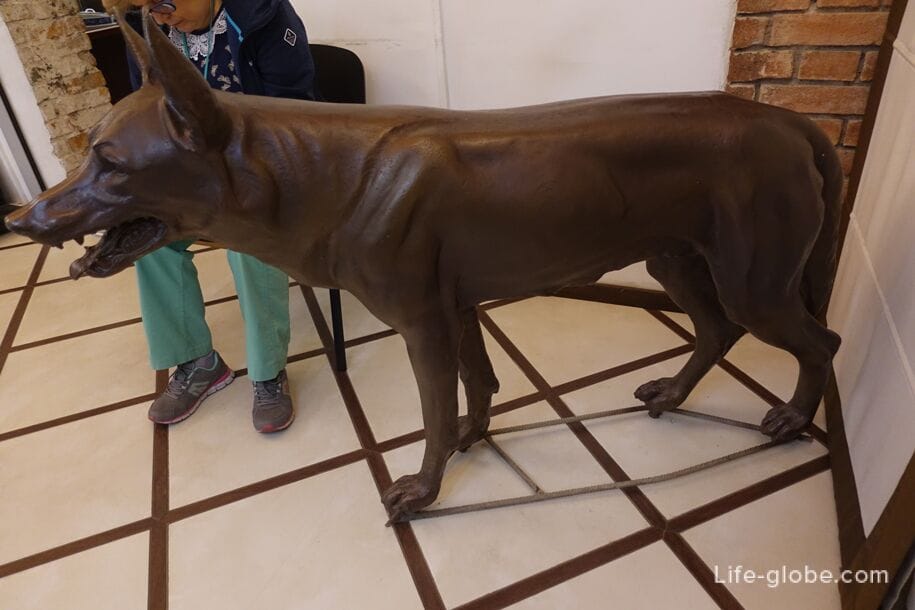
A millstone is a paired stone circle used in windmills and watermills, and used for grinding wheat and other grains into flour.
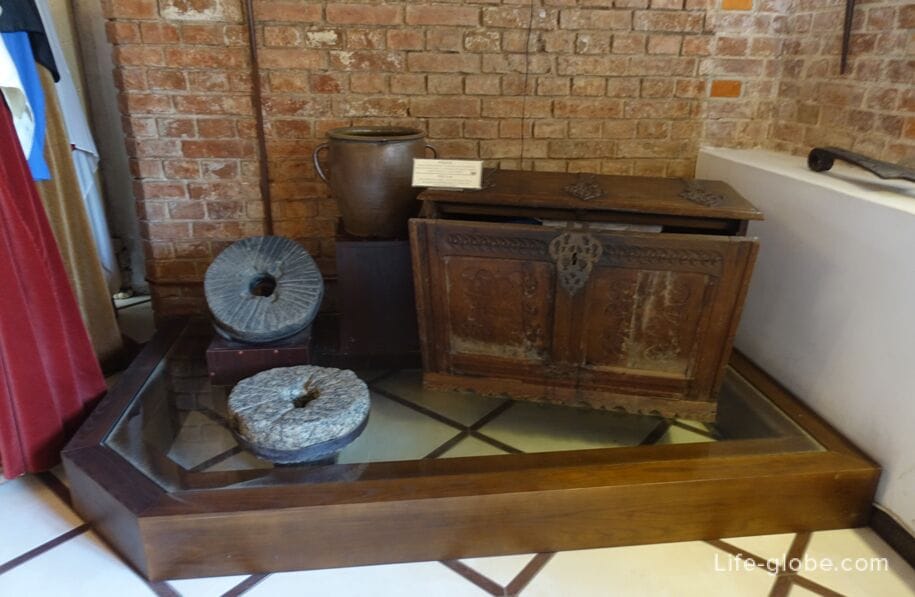
Rondel (French - Rondelle - circle, round) is one of the most popular daggers of the Middle Ages.
The Rondel appeared at the turn of the 13th-14th centuries during the Crusades. It is considered a knight's weapon and serves as an addition to the sword. One of the functions of his round guard is to protect his hand from the enemy's sword, and the main task is to pierce the chain mail.
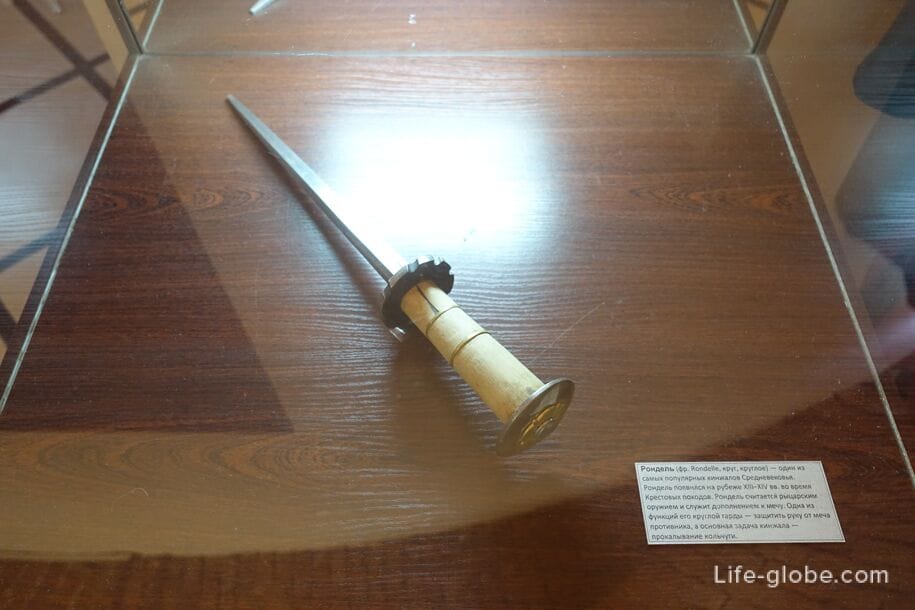
The permanent exhibition "Echo of War" is located in the premises of the historical bomb shelter of the Second World War, on the territory of the architectural and landscape complex "Friedland Gate".
This exhibition highlights the uniqueness of the Kaliningrad region, where there have been intersections and interpenetration of culture and history of different peoples and countries.
The project was implemented for the 70th anniversary of Victory in the Great Patriotic War. The project embodies the tragic, disturbing, atmosphere of war; it shows all the horror experienced by the civilian population during military aviation raids, bombings, and assaults.
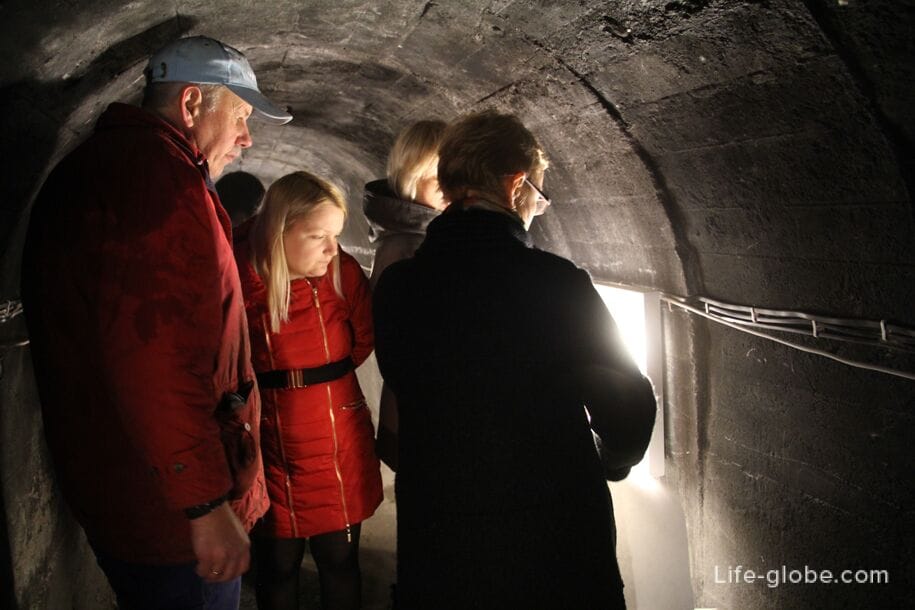

Address of the museum "Friedland Gate": the museum is located in Friedland Gate, at the intersection of Kalinin Avenue and Dzerzhinsky Street, adjacent to Yuzhny Park, at the address: Dzerzhinsky Street, 30, Kaliningrad.
Entrance from Kalinin Avenue.
Exhibitions and excursions in the museum: you can find out the cost, opening hours of the museum, as well as about excursions and other events held in the museum, both at the ticket office located directly in the museum and on the official website.
The official website of the museum "Friedland Gate": fvmuseum
Yuzhny Park is one of the central parks of Kaliningrad.

The Church of the Holy Family is a historical monument, within the walls of which the concert hall of the Kaliningrad Regional Philharmonic is now located.
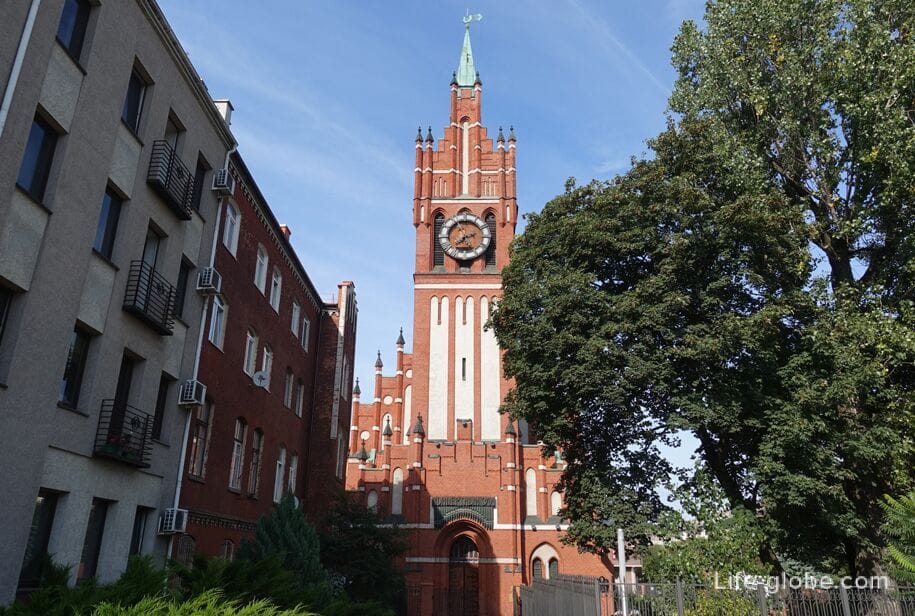
The Brandenburg Gate is one of the seven preserved city gates of Kaliningrad and the only one still used for its intended purpose. There is a museum and a Marzipan shop in the gate.
